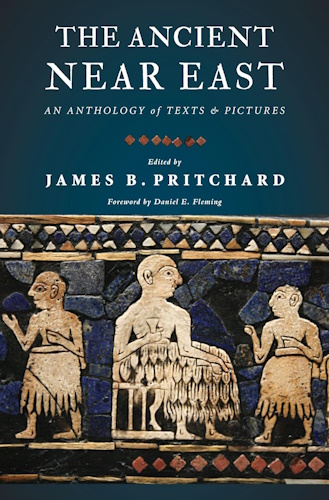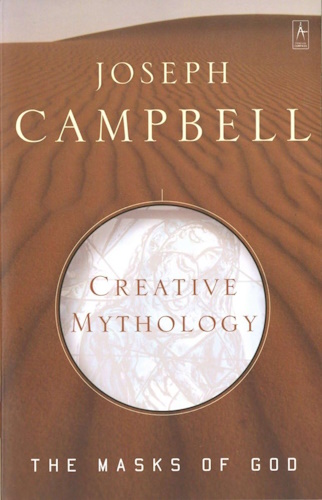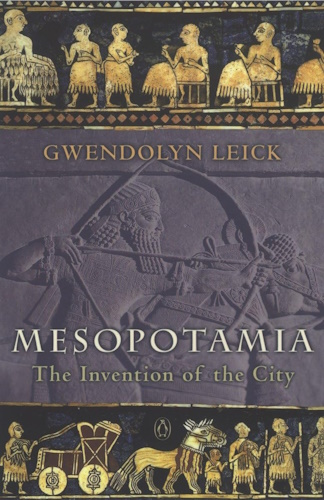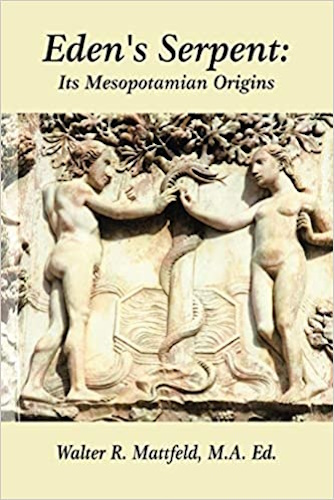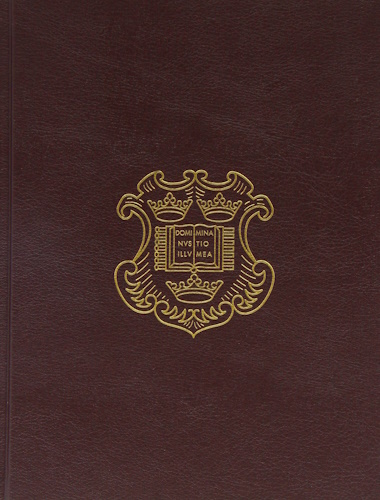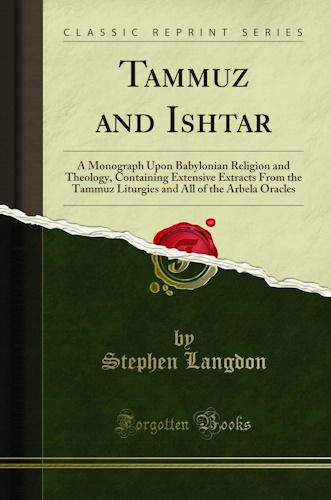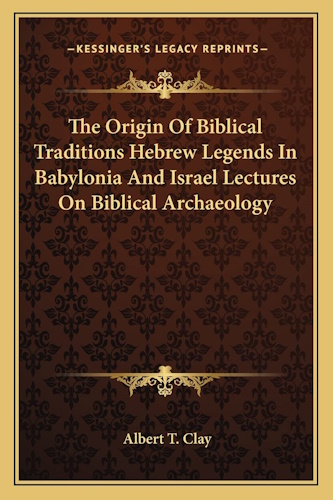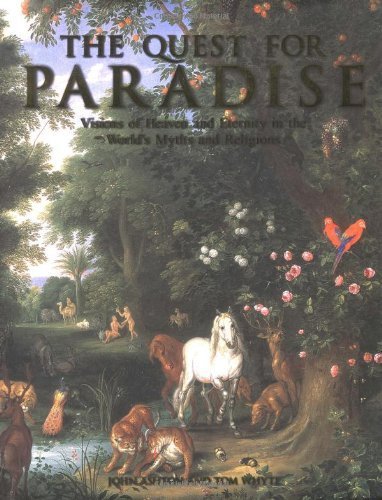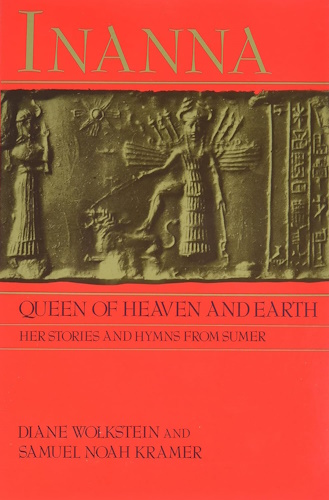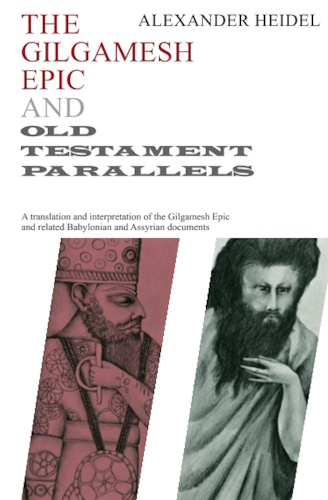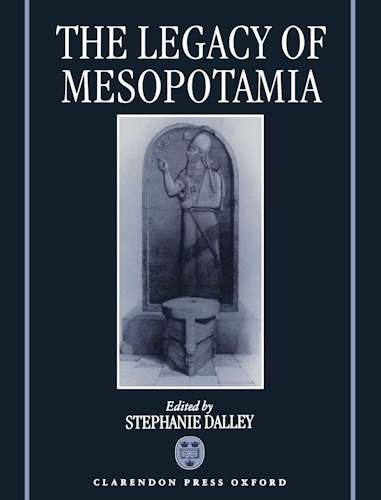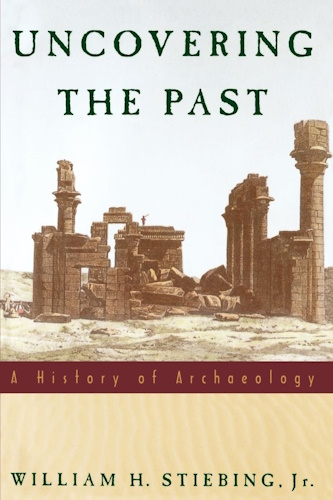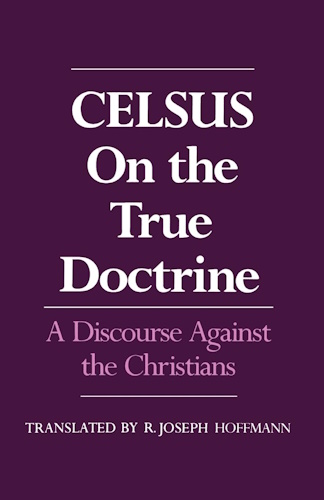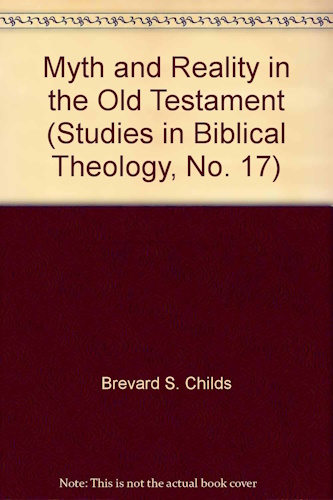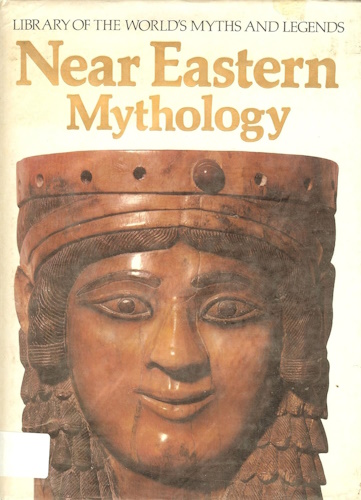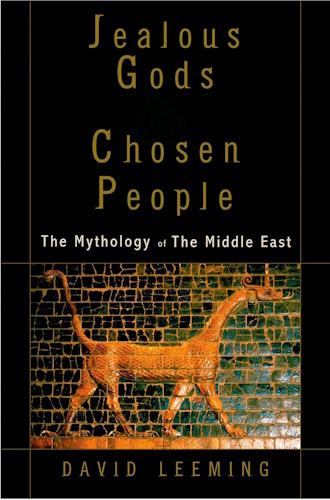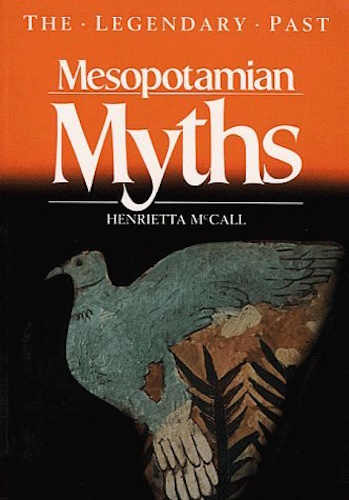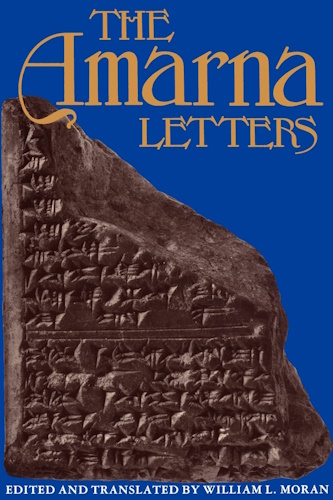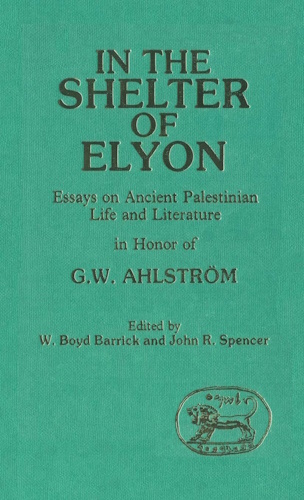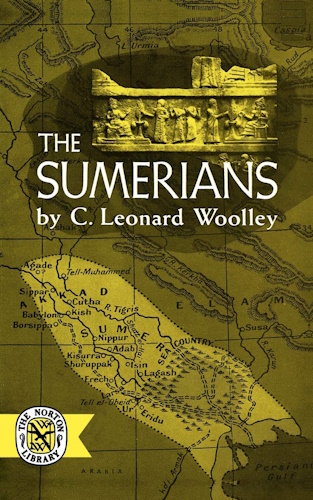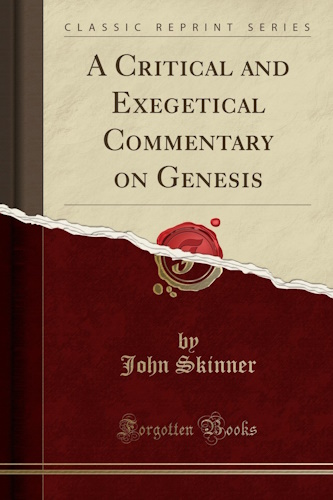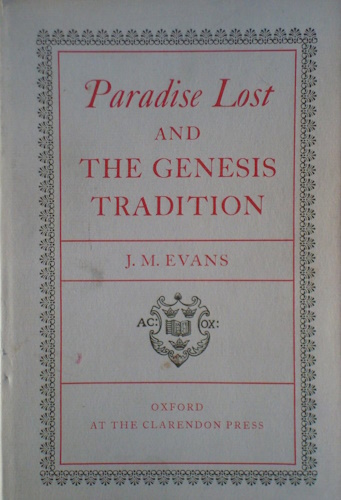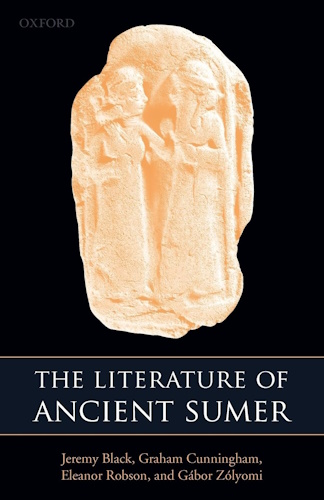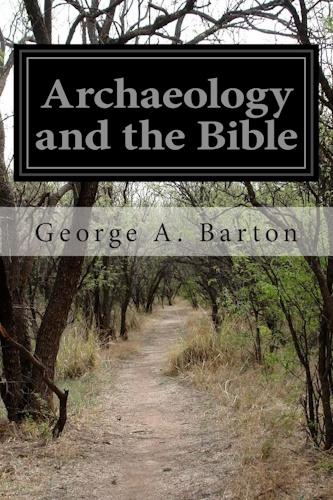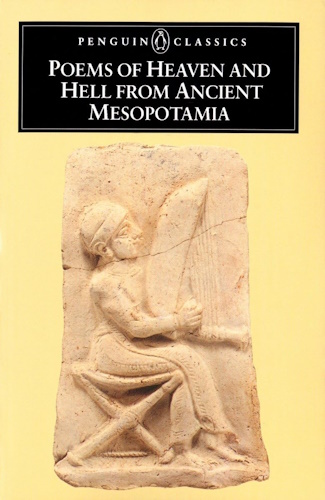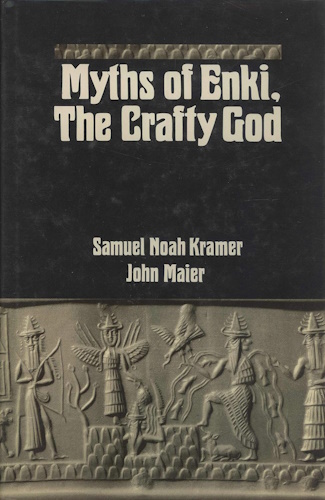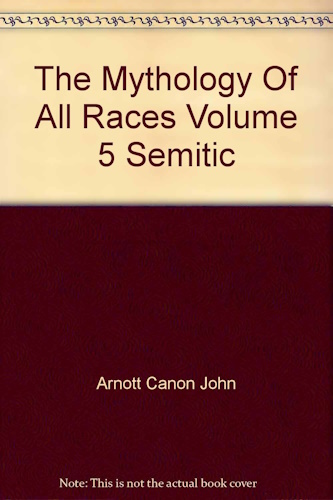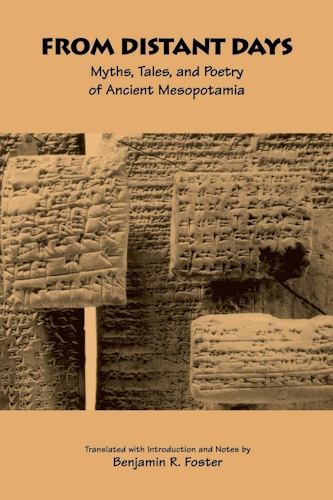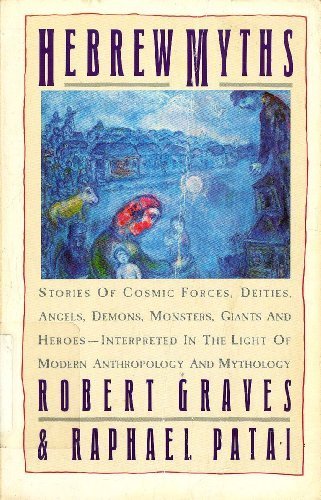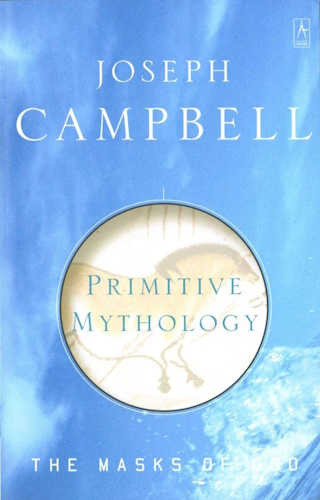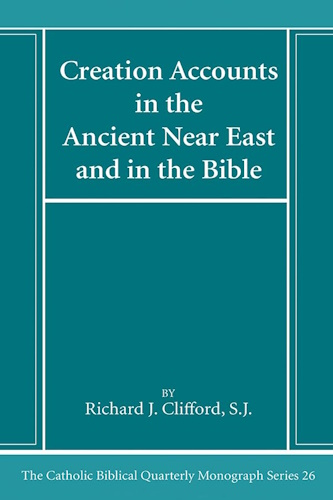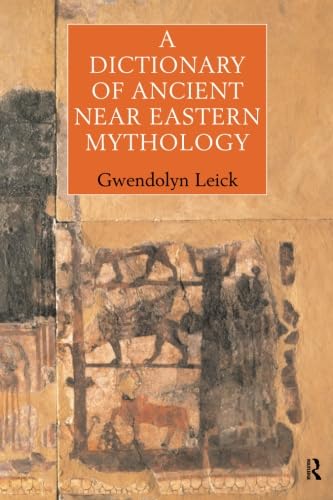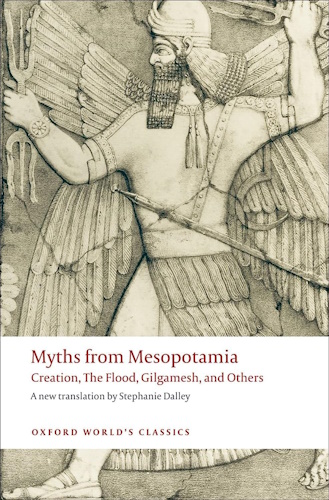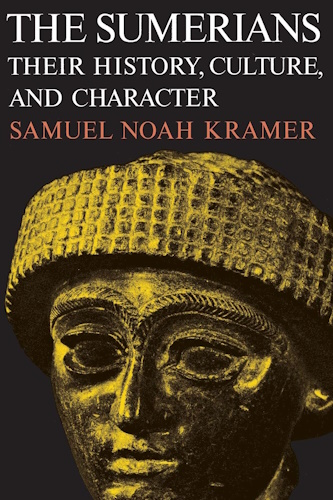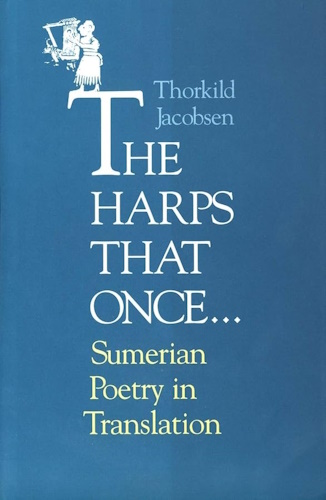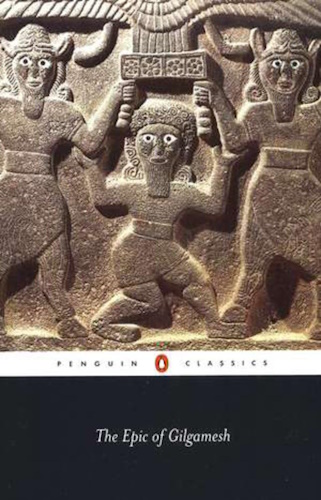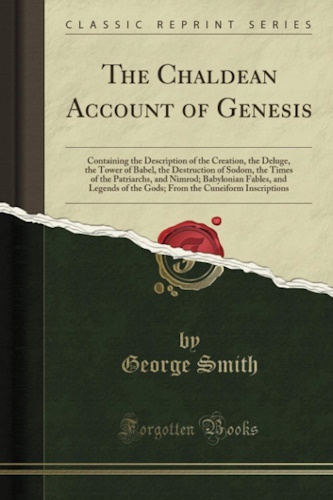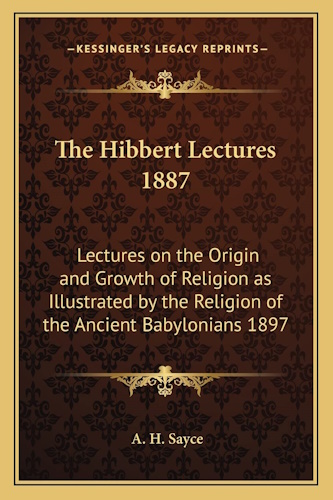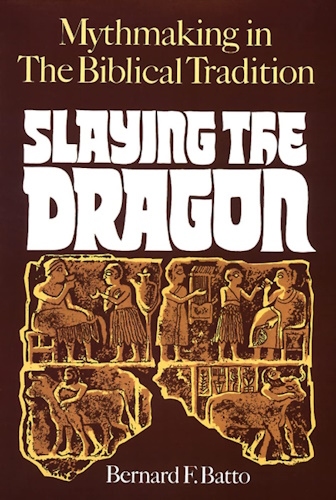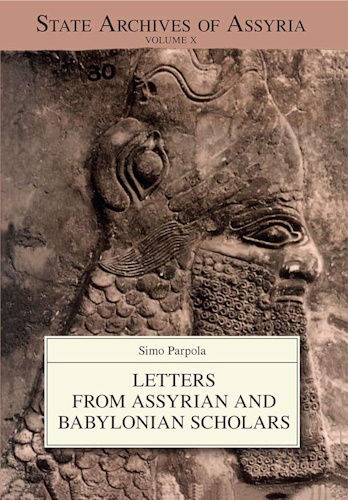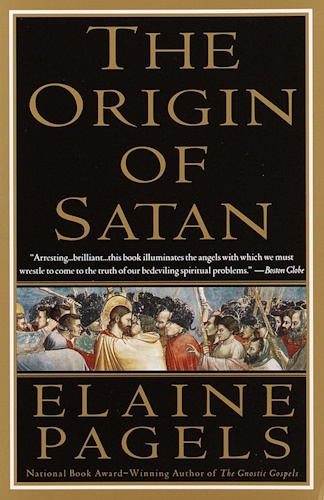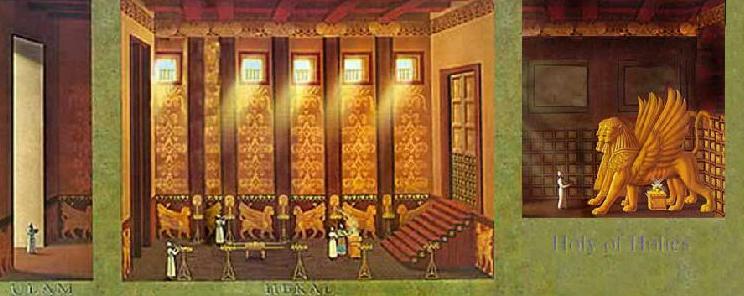![]()
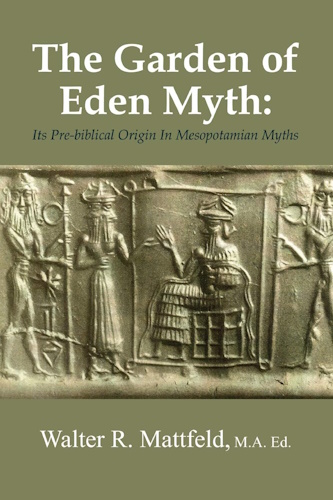
Bible Origins
Genesis' Literary Borrowing:
Adam and Eve and Their Prototypes:
Enkidu and the Temple Courtesan Shamhat
From the Epic of Gilgamesh
Part Two
by
Walter Reinhold Warttig Mattfeld y d la Torre, M.A. Ed.
e-mail contact
23 October 2004
Revisions through: 22 August 2009
![]()
Pictures, Photos, Drawings, Images and Illustrations
of
Gilgamesh, Enkidu and Huwawa (Humbaba)
of the
Epic of Gilgamesh
from various
Ancient Near Eastern Art Forms
I admit to having some confusion in "tentatively" identifying the below characters. Gilgamesh in myths is _not_ generally portrayed as walking about naked embracing the edin's wild animals like gazelles, antelope and wild cattle; he is a civilized "clothes-wearing" man who dwells in the city of Uruk, his "companions" are the civilized clothes-wearing people of Uruk, like himself. When his clothes wear out while mourning Enkidu's death he slays a lion and makes clothes of its body. Thus, I understand the "naked hero" who embraces wild gazelles and cattle to be Enkidu.
Enkidu is a Sumerian name: en (lord), ki (earth), du (good), possibly "lord of the good earth"?
Dalley notes on Enkidu's name several scholarly proposals:
"Enkidu...Name may mean 'created by Ea', 'lord of the good place', or 'the wild one'."
(p. 321. "Enkidu" [Glossary]. Stephanie Dalley. Myths From Mesopotamia: Creation, The Flood, Gilgamesh and Others. Oxford & New York. Oxford University Press. 1989, 1991)
Professor Andrew George on Enkidu's name:
"Lord of the Pleasant Place."
(p. 223. "Enkidu" [Glossary of Proper Names]. Andrew George. The Epic of Gilgamesh: The Babylonian Epic Poem and Other Texts in Akkadian and Sumerian. London. Penguin Books. 2000, 2003. paperback)
Enkidu, personifying primitive savage man of the steppe (Sumerian edin, Akkadian seru) is portrayed in myths as being originally NAKED, then he meets Shamhat and learns to wear clothes. When he meets Gilgamesh in Uruk he is wearing clothing, so one ought to expect scenes of Enkidu and Gilgamesh showing both as clothed, not one naked and the other clothed. Enkidu is described as hairy and strong and "garbed like" (meaning he is hairy and naked like a wild animal?) the god of cattle, Shakkan. Could the naked half human with bison face be Shakkan?
Below, a seal showing twice a half-human bison (Shakkan?) with long flowing locks cascading over shoulders and a tail to the viewer's left and right subduing a lion; in the center a naked Enkidu (?) with a human head who counts cattle among his feeding companions in the Sumerian edin. All the individuals are naked and wearing a thong waist girdle. (for the photo cf. p. 360. "Kunst." Barthel Hrouda. Editor. Der Alte Orient, Geschichte und Kultur des alten Vorderasien. Munchen. C. Bertelsmann. Verlag GmbH. 1991. ISBN 3572-00867-0)

Below, a seal showing a naked Enkidu (?) or a Lahmu (?) wearing a thong waist girdle providing drinking water for a buffalo. (for the photo cf. p. 360. "Kunst." Barthel Hrouda. Editor. Der Alte Orient, Geschichte und Kultur des alten Vorderasien. Munchen. C. Bertelsmann. Verlag GmbH. 1991. ISBN 3572-00867-0)
The below two translations suggest for me that Enkidu "waters the beasts" which included cattle at edin's watering hole. If these two translations are correct is the below image of a naked man offering water to a buffalo recalling Enkidu's "watering of beasts" including his cattle companions in the eden/edin?
"Go, my hunter, take with thee a harlot-lass,
When HE WATERS THE BEASTS at the watering place,
She shall pull off her clothing, lay bare her ripeness..."
(p. 43. "The Epic of Gilgamesh." James B. Pritchard. Editor. The Ancient Near East, An Anthology of Texts and Pictures. Princeton, New Jersey. Princeton University Press. 1958. Paperback edition)
"Enkidu...
He was dressed as cattle are.
With gazelles he eats vegetation,
With cattle he quenches his thirst at the watering place.
With wild beasts he satisfies his need for water...
All the time he eats vegetation with cattle...
He kept helping cattle, wild beasts of open
country, to escape my grasp..."
(p. 53. "Gilgamesh I." Stephanie Dalley. Myths From Mesopotamia: Creation, The Flood, Gilgamesh and Others. Oxford & New York. Oxford University Press. 1989, 1991)

Below, a cylinder seal impression of the 3rd millennium B.C. showing a naked man flanked by two gazelles (?) or antelope (?) which appear below his waist line. About them a cow is savaged by a leopard and maned lion while a bearded human-faced bull is under attack by another maned lion. Could the naked man be Enkidu who fed with wild cattle and gazelles? (the below photo is described as a "Cylinder seal of the Royal Cemetery period."(Leonard Cottrell. The Quest For Sumer. New York. G. P. Putnam's Sons. 1965)
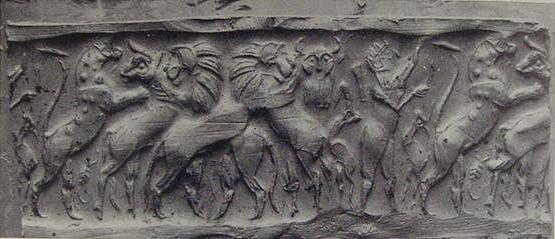
Below, a cropped portion of a modern cylinderseal impression from a seal dated circa 2500 B.C. found at ancient Mari on the Euphrates showing a "naked hero" embracing two "antelope" who are in turn being savaged by two lions who are in turn under attack by two bison-men each wielding a weapon. Could the "naked hero" be Enkidu who fed with gazelles -gazelles being a type of antelope? (for the seal cf. p. 153. figure 53. Harvey Weiss. Editor. Ebla to Damascus: Art and Archaeology of Ancient Syria. Washington, D.C. Smithsonian Institution. 1985)
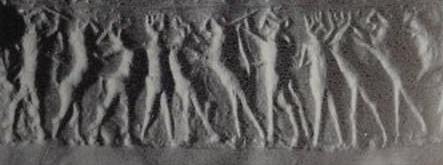
The seal below has a clothed Enkidu (?) subduing a wild horse with a club.(for the photo cf. p. 360. "Kunst." Barthel Hrouda. Editor. Der Alte Orient, Geschichte und Kultur des alten Vorderasien. Munchen. C. Bertelsmann. Verlag GmbH. 1991. ISBN 3572-00867-0)
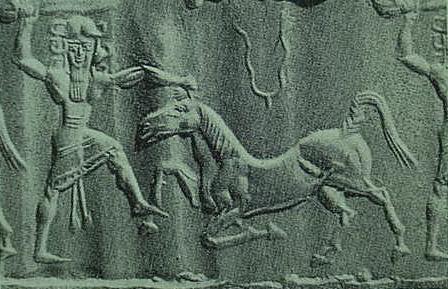
The seal below portrays a clothed Enkidu (?) mastering a lion. ( for photo cf. p. 175. Paolo Matthiae. Geschichte der Kunst im Alten Orient: Die Grossreiche der Assyrer, Neubabylonier und Achaemeniden, 1000-330 von Christ. Konrad Theiss Verlag GmbH Stuttgart 1999. ISBN 3-8062-1437-9)
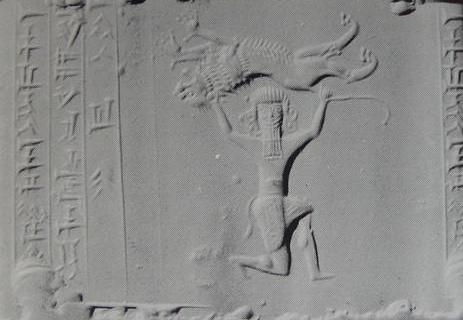
On the below cylinder seal a naked Enkidu (?) wearing a thong waist girdle (viewer's left) subdues a water buffalo while a half-human bison wearing a waist thong girdle masters a lion (viewer's right). (cf. p. 470. Heinrich Schaeffer & Walter Andrae. Die Kunst Des Alten Orients, Dritte, Neubearbeitete Auflage, 11 und 12 Tausend.. Berlin. Im Propylaen-Verlag. 1925)
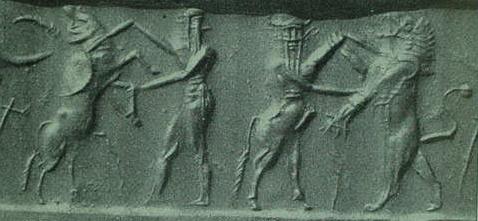
Below, a naked Enkidu (?) or a Lahmu (?) wearing a thong waist girdle on left and a clothed Gilgamesh or Enkidu (?) on right master wild bulls. A lion attacks a bull on far right. Cylinder seal impression, 3rd millennium BCE (fig. 44, in Plates at end of book. Gwendolyn Leick. A Dictionary of Ancient Near Eastern Mythology. London. Routledge. 1991, 1996, 1997, 1998. ISBN 0-415-19811-9 paperback)

Below, a helmeted or crowned Gilgamesh (?) on right and Enkidu (?) on the left slay Huwawa/Humbaba (?). A God looks on (probably Marduk or Asshur who has pre-empted the original god Shamash), Neo Assyrian period (fig. 37. in Plates at end of book. Gwendolyn Leick. A Dictionary of Ancient Near Eastern Mythology. London. Routledge. 1991, 1996, 1997, 1998. ISBN 0-415-19811-9 paperback). Note: both Gilgamesh and Enkidu are clothed as one would expect, Enkidu being introduced to the wearing of clothing by Shamhat before he met Gilgamesh at Uruk.

Below, a naked Enkidu (?) wearing a thong waist girdle embraces (?) two wild bulls (design inlay from a harp found in a royal burial pit at Abraham's Ur of the Chaldees). (for the photo cf. p. 360. "Kunst." Barthel Hrouda. Editor. Der Alte Orient, Geschichte und Kultur des alten Vorderasien. Munchen. C. Bertelsmann. Verlag GmbH. 1991. ISBN 3572-00867-0)
Some translations of the Epic of Gilgamesh understand that the naked Enkidu is a companion of not only gazelles but of wild cattle as well. Like the gazelles and cattle Enkidu feeds on grass and is with them at edin's watering hole when he encounters a naked Shamhat. Perhaps the below picture of a naked man embracing two human-faced bulls is Enkidu embracing the wild cattle he feeds with in eden/edin? He are told that after having had sex with Shamhat his companions, the cattle (as well as gazelles) will have nothing to do with him, he will become an alien to them, their friend or companion no more. So perhaps the picture of a naked Enkidu embracing wild bulls (they have no halters on their muzzles showing that they are domesticated) is recalling the care-free Enkidu _before_ he encountered Shamhat?
"Enkidu...
He was dressed as cattle are.
With gazelles he eats vegetation,
With cattle he quenches his thirst at the watering place.
With wild beasts he satisfies his need for water...
All the time he eats vegetation with cattle...
He kept helping cattle, wild beasts of open
country, to escape my grasp...
She must take off her clothes and reveal her
attractions.
He will see her and go close to her.
Then his cattle, who have grown up in open
country with him, will become alien to him....
He kept helping cattle, wild beasts of open
country, to escape my grasp...
And when he approaches the cattle at the watering place,
She must take off her clothes and reveal her
attractions...
Enkidu...
who eats vegetation with gazelles,
Drinks (at) the watering place with cattle,
Satisfied his need for water with wild beasts.
Shamhat looked at the primitive man...
Whe he was sated with her charms,
He set his face toward the open country of his
cattle.
The gazelles saw Enkidu and scattered,
The cattle of the open country kept away from his body...
Enkidu had been diminished, he could not run as
before.
Yet he had acquired judgement (?), had become
wiser.
He turned back (?), he sat at the harlot's feet...
The harlot spoke to him, to Enkidu,
'You have become [profound] Enkidu, you have
become like a god.
Why should you roam open country with wild
beasts?
Come, let me take you into Uruk..."
(pp. 53-56. "Gilgamesh I." Stephanie Dalley. Myths From Mesopotamia: Creation, The Flood, Gilgamesh and Others. Oxford & New York. Oxford University Press. 1989, 1991)
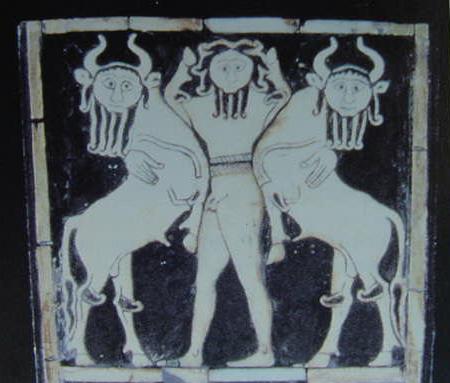
Below, a naked Enkidu (?) wearing only a thong girdle or belt wrestles a lion. Note: Enkidu's companions were gazelles; I understand that he protected them from the carnivores that roamed the Sumerian edin (edin being rendered variously as _uncultivated_ desert, steppe or plain). I thus see this rendering as a _naked_ Enkidu protecting the gazelles he roamed with from lions. Gilgamesh is not portrayed in texts as running about naked. He represents civilized clothes-wearing mankind that dwells in cities. While it is true he becomes a wanderer like Enkidu after the latter's death, when he slays the lion it is to make clothes of it to replace the rags he wears. (The below photograph is from George Smith. The Chaldean Account of Genesis. London. 1876. Whittingham and Wilkins. Reprinted: 1994 by Wizards Bookshelf. San Diego, California)
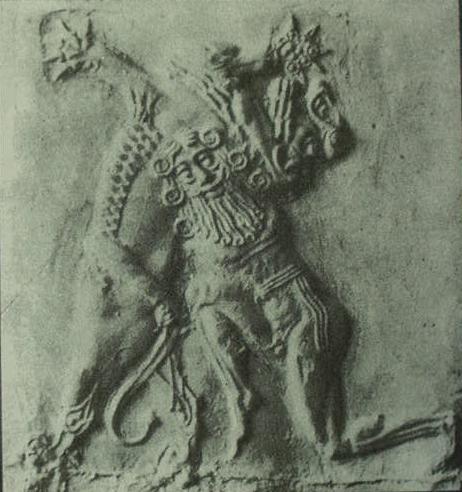
Below, a "clothed" Enkidu (?) restraining a lion and holding a sickle-sword. Enkidu is famed for (1) his prodigious strength and (2) his abundant locks of hair (recalling the biblical Samson famed for abundant hair and strength, who may have been modeled after Enkidu), both strike me as being present in this image found at Khorsabad, 20 kilometers north of the Neo-Assyrian capital of Nineveh. Khorsabad was constructed under the Assyrian King Sargon II (reigned circa: 722-705 B.C. who carried off into captivity the 10 tribes of Israel circa 721 B.C.), and this site was his royal palace. Thus the below image of what _I take to be_ Enkidu is an Assyrian rendering of the 8th century B.C.
Professor Speiser on Enkidu's abundant head hair:
"Aruru washed her hands,
Pinched off clay and cast it on the steppe.
[On the step]pe she created valiant Enkidu...
[Sha]ggy with hair is his whole body,
He is endowed with head hair like a woman.
The locks of his hair sprout like Nisaba."
(p. 42. E. A. Speiser. "The Epic of Gilgamesh." James B. Pritchard. Editor. The Ancient Near East, An Anthology of Texts and Pictures. Princeton, New Jersey. Princeton University Press. 1958. paperback)
According to the Epic of Gilgamesh, after meeting Shamhat the Harlot-priestess of Uruk, she shares her clothes with him before leaving edin's wateringhole. Later they come across a camp of shepherds in the edin. She persuades him to eat the bread and alcoholic drink they place before him as an act of courtesy to one's guest. Enkidu initially balks at this, he has known only the eating of grass and drinking of water with his animal companions the gazelles. He submits to Shamhat's advice and after consuming these items he then is declared to be "a human" (he is a beast no longer). He is given after this act of eating a change of garments apparently more befitting a man than the Harlot's garment he initially wore upon his arrival at the shepherd's camp. He becomes the protector of the shepherds' flocks and herds grazing in the steppe. He guards their flocks from edin's predators, lions, leopards, wolves, hyenas in his "clothed" state. I thus understand this picture shows a "clothed" Enkidu, who has left the animal world and cast his lot with civilized man. Note: Smith (1875) thought this was an image of the biblical Nimrod, whom he called Izdubar after his Akkadian name appearing on the Assyrian tablets he was translating in the British Musem in London found earlier at Nineveh (The below drawing is from a stone bas-relief found at Khorsabad. cf. George Smith. The Chaldean Account of Genesis. London. 1876. Whittingham and Wilkins. Reprinted: 1994 by Wizards Bookshelf. San Diego, California).
Professor Speiser's translation has Enkidu putting on clothing, and with a weapon pursuing lions, even capturing lions (Note the "weapon" or sword and the "captured lion" held by the Hero whom I have identified as being Enkidu in the below bas-relief at Khorsabad) to protect the shepherds' animals in the steppe (Sumerian: edin, Akkadian: seru):
"The harlot opened her mouth,
Saying to Enkidu:
"Eat the food, Enkidu,
As is life's due;
Drink the strong drink, as is the custom of the land."
Enkidu ate the food,
until he was sated;
Of strong drink he drank...
He...
Became human,
He put on clothing...
He took his weapon
To chase the lions,
That shepherds might rest at night...
He captured lions,
The chief cattlemen could lie down;
Enkidu is their watchman,
The bold man,
The unique hero!"
(p. 48. E. A. Spieser. "The Epic of Gilgamesh." James B. Pritchard. Editor. The Ancient Near East, An Anthology of Texts and Pictures. Princeton, New Jersey. University of Princeton Press. 1958. Paperback edition. Volume 1)
I am in agreement with earlier scholars that Genesis' Adam is in part a recast of Enkidu, and thus in the below image we have what the pre-biblical prototype of Adam probably "looked like." Note that the lion he has apparently captured is rendered quite small in relation to Enkidu's (?) body. This is probably done to show that he was a "giant of a man," great in physical strength and endurance, who's only equal was Gilgamesh, but this towering "brute of a man" was no match for the wiles of a voluptuous naked woman (Shamhat/Eve) who "brought him down" and "took power over him" exploiting his sexual desire for her by having sex with him and then persuading him to leave the Sumerian edin and its wild animals and to eat food formerly forbidden him as a beast of edin, causing him to realize in the edin that it is wrong to be naked.
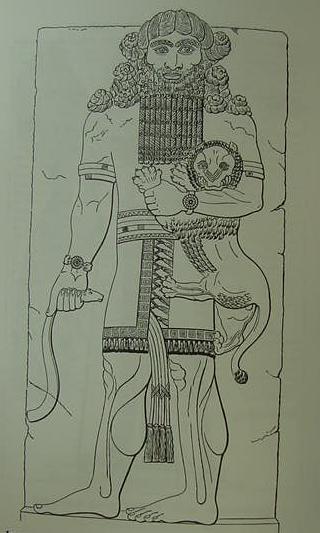
Below, a Neo-Assyrian period (8th-7th century B.C.) cylinderseal impression showing a bareheaded axe-weilding Enkidu (viewer's left) assisting a Crowned sword-weilding Gilgamesh (viewer's right) dispatch the bull of heaven. Please note that the above Neo-Assyrian figure found at Khorsabad which I have proposed is Enkidu, like the image of Enkidu in the below cylinderseal impression is bareheaded and clothed; it is Gilgamesh who is _not_ bareheaded, he wearing a tiara or crown to show he is a king of Uruk.

The Sumerian Huwawa (Neo-Assyrian: Humbaba), below, appears in the form of a NAKED man, wearing a thong waist girdle. According to the Epic of Gilgamesh he has no father or mother (like Adam). His duty is to guard the sacred Cedar Mountain situated in the Lebanon, "the dwelling place of the gods" and deny access to its trees by man. Surprisingly he is characterized as by Gilgamesh as being a source of evil in the land that the gods want to be destroyed (Shamash the sun-god aids Gilgamesh and Enkidu in this endeavor). I understand that Huwawa is "another" Adamic prototype as well as one of many prototypes for the guardian Cherub that dwells in the Garden of Eden's Lebanese Cedar mountain, cf. Ezekiel 31:1-18 (other Adamic prototypes are Adapa of Adapa and the Southwind Myth, and Gilgamesh and Enkidu). Later art forms show Huwawa as clothed. His face is shown with clenched teeth and very wrinkled to exagerrate no doubt an enraged human expression to strike terror into the opponent. (For the below drawing cf. p. 110. figure 14. Andrew George. The Epic of Gilgamesh, The Babylonian Epic Poem and Other Texts in Akkadian and Sumerian. London. Penguin Books. 1999. paperback). Note: Huwawa is tasked in denying man access to the Cedars. In other Sumerian myths we learn that Inanna, who bore the Sumerian epithet nin edin "the lady of edin," descended to the earth to eat of cedar trees to acquire knowledge in order to "know" how to have sex with her bridegroom Dumuzi of Uruk who bore the Sumerian epithet mulu edin "the lord of edin." So, the Cedars which were _forbidden by the gods_ to man were also trees whose cedar nuts (pine nuts) which if eaten "gave knowledge" about how to have sex. The Hebrews have apparently taken these Sumerian concepts and motifs and recast them as a forbidden Tree of Knowledge of Good and Evil in Eden's garden that the lady of Eden (Eve) eats of to acquire knowledge (after eating of the Tree of Knowledge Eve later has "sex" with Adam, just as Inanna after eating of a tree has sex with Dumuzi).
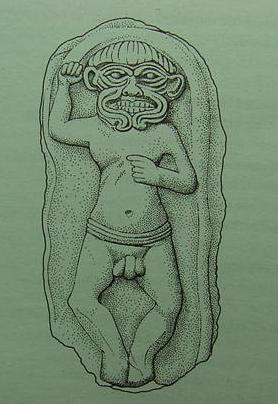
Below, a NAKED Huwawa, wearing a thong waist girdle, is slain and beheaded with swords wielded by a beardless Enkidu (observer's left) and bearded Gilgamesh who wears a cap (observer's right). Note: both Gilgamesh and Enkidu are clothed. After Huwawa's death Gilgamesh's men begin climbing the cedars and lopping off their branches, to make logs of them to float down the Euphrates to his city of Uruk where he will use them to adorn temples. Note the small figure on a stylized tree to left of Enkidu. (for the picture cf. p. 121. figure 16. Andrew George. The Epic of Gilgamesh, The Babylonian Epic Poem and Other Texts in Akkadian and Sumerian. London. Penguin Books. 1999. paperback)
Besides axes, swords are cast for the slaying of Huwawa the guardian of the cedar mountain. I understand Huwawa to be a cherub prototype and the sword(s) that slew him was recast as a firey sword that denies man access to the Tree of Life in the Garden of Eden:
"They will cast weapons in our presence...
The craftsmen...
cast hassinnum-axes three talents each,
Cast great swords,
Blades two talents each..."
(p. 144. Gilgamesh Old Babylonian Version." Stephanie Dalley. Myths from Mesopotamia: Creation, The Flood, Gilgamesh, And Others. Oxford & New York. Oxford University Press. 1991)
I understand that Ezekiel's notion that the Garden of Eden posseses Cedar trees and is atop a mountain in the Lebanon (Ez 31:3, 8-9 is recalling Huwawa's guarding the Cedars atop a Lebanese mountain, denying man access to these trees to chop them down and take them to Uruk to build temples and palace. Furthermore I understand that the Hebrews have _inverted_ a number of motifs here. Huwawa the guardian of the cedars has become the Cherubim who guard the cedars in God's mountain-top garden. Genesis' notion that a _fiery sword_ assists the Cherubim in denying access to the tree of life in the Garden of Eden by man is derived from the swords that slew Huwawa. In other words the Hebrews are _denying_ man has the power to slay a God's guardian creature and access forbidden trees. So an _inversion_ has occured, the sword which slew Huwawa thereby giving man access to forbidden trees has become a fiery sword denying man access to a sacred tree (Ge 3:24).
Professor Jastrow (1898) also commented on Humbaba's cedar mountain being like the biblical Garden of Eden:
"The fortress of Khumbaba is situated in a grove of wonderful grandeur, in the midst of which is a large cedar, affording shade and diffusing a sweet odor. The description reminds one forcibly of the garden of Eden..."
(p. 481. Morris Jastrow, Jr. Handbooks on the History of Religions: The Religion of Babylonia and Assyria. Boston. Ginn & Company, Publishers. 1898)

Also of interest is that Enkidu (a prototype of Adam) and his wild animal companions encounter a naked Shamhat (a prototype of Eve) at a watering hole in the "steppe." The Akkadians at times used Sumerian Logograms in lieu of Akkadian words. The Akkadian Epic of Gilgamesh at times renders the Akkadian word _seru_ meaning "steppe" by the Sumerian Logogram (EDIN). That is to say, the reader's mind upon seeing (EDIN) automatically knew this was
_seru_ "steppe." In other words, Enkidu's association with the Sumerian edin or "steppe" was never completely lost when Akkadian came to replace Sumerian as a literary language, Enkidu's association with the seru in the form of a Sumerian logogram (EDIN) kept alive the connection down through the centuries.
The Hebrews' patriarchs, Abraham through Jacob (called later Israel) are portrayed as tent-dwelling shepherds: "And you shall make response before the Lord your God, 'A wandering Aramean was my father" (King James Bible: "Syrian" Deut 26:5). They grazed their herds and flocks in the edin steppe lands extending from Ur of the Chaldees (Ge 11:28), south of Babylon to Haran (Ge 11:31) in northern Syria, and Damascus (Ge 15:2) and thence south to Beersheba (Ge 21:33). The city-dwellers of Mesopotamia held the tent-dwelling shepherds of the western lands (Martu, Amurru, Aram) in contempt and regarded them a menace to civilized life in the cities.
IN DEFENSE OF THEIR WAY OF LIFE AND THE LOCATION THEY LIVED IN WITH THEIR HERDS (THE EDEN/EDIN STEPPE) THE HEBREW SHEPHERDS ('SYRIAN' OF DEUTERONOMY 26:5) PROBABLY RECAST THE CREATION-OF-MAN MYTHS CONCOCTED BY THE MESOPOTAMIAN CITY-DWELLERS INTO A REFUTATION: GOD'S DELIGHT WAS NOT IN A CITY AND IT'S CITY-GARDEN FOUNDED BY A MUDERING CAIN AND DESCENDANTS, IT WAS IN THE EDEN, WHICH VIA A DELIBERATE MISPRONOUNCIATION AND SPELLING BECAME A PLACE OF "DELIGHT AND WELL-WATERED" INSTEAD OF A SEMIARID DESERT-LIKE GOD-FORSAKEN-WILDERNESS, A FIT PLACE ONLY FOR THIEVES, BRIGANDS AND CUT-THROATS IN MESOPOTAMIAN CITY-DWELLER'S EYES.
Primal man, Adam had dwelt NAKED with animals for companions in a garden, in a location called Eden, just as another primal man, Enkidu of the Epic of Gilgamesh had dwelt NAKED with animal companions until he "fell for" a naked woman brought by the hunter to the watering hole in the steppe, a place where Enkidu and the animal's "HEARTS' DELIGHT was water", to undo the naked man of the steppe, separating him from his animal companions and having him leave the steppe to dwell with civilized man in a city called Uruk. The naked woman's words to Enkidu: "You are like a God now, why roam with the animals? Let us leave THIS PLACE OF DESOLATION, berift of shepherds, come with me to Uruk, to meet mighty Gilgamesh." Enkidu agrees and she clothes his and her nakedness before leaving the steppe, and they dwell in the city of Uruk, glorified for its "civilized amenities" over the god-forsaken desolate steppe. I understand Enkidu was recast as Adam and Shamhat the naked harlot who separated him from his animals as "a more fit companion", became Eve. The watering hole in the steppe where she seduced Enkidu, the source of Enkidu's and the animals' heart's "delight" became morphed into 'eden, meaning a place of "delight" _contra_ a city-dwelling Shamhat characterizing the steppe as a place of desolation. It is well to recall's Leick's words that the gods regarded cities as their dwellings and hearts' delight whereas naked primal man's (Enkidu's) dwelling and heart's delight was a watering hole in the steppe (Akkadian seru, Sumerian edin).
Kramer on the lack of interest in the moral dilemma of "man's freewill" by the Sumerians:
"Sumerian thinkers, in line with their world view, had no exaggerated confidence in man and his destiny. They were firmly convinced that man was fashioned of clay and created for one purpose only: to serve the gods by supplying them with food, drink, and shelter, so that they might have full leisure for their divine activities...One fundamental moral problem, a favorite with Western philosophers, never troubled the Sumerian thinkers at all -namely, the delicate problem of free will. Convinced beyond all need for argument that man was created by the gods solely for their benefit and pleasure, the thinkers accepted man's dependent status just as they accepted the divine decision that death is man's lot and that only the gods are immortal."
(p. 104. "The First Moral Ideas." Samuel Noah Kramer. History Begins At Sumer, Twenty-seven "Firsts" in Man's Recorded History. Garden City, New York. Doubleday Anchor Books. 1959. First published 1956 by The Falcon's Wing Press)
One "evil act" of mankind is defined as eating or drinking that which is forbidden. Such Sumerian notions may explain why Adam and Eve's eating of forbidden food caused God to say later of mankind "Their hearts are evil from their youth" (Ge 8:21).
"...Nanshe...judging mankind...The evil human types who suffer her displeasure are described as follows:
(People) who walking in transgression reached out with high hand,
Who transgress the established norms...
Who said "I would eat that which is forbidden."
Who said "I would drink that which is forbidden."
(p. 106. "The First Moral Ideas." Samuel Noah Kramer. History Begins At Sumer, Twenty-seven "Firsts" in Man's Recorded History. Garden City, New York. Doubleday Anchor Books. 1959. First published 1956 by The Falcon's Wing Press)
Ashurbanipal's 7th century BC prayer of forgiveness (The Assyrian King is apparently afflicted with some unknown disease) for unknown trespasses against his god, including the eating of forbidden food:
"In ignorance I have eaten that forbidden of my god;
In ignorance I have set foot on that forbidden by my goddess.
O Lord, my transgressions are many; great are my sins.
The transgression I have committed, indeed I do not know;
The sin I have done, indeed I do not know.
The forbidden thing which I have eaten, indeed I do not know...
The god in the rage of his heart confronted me...oppressed me...
Mankind, everyone that exists -what does he know?
Whether he is committing sin or doing good, he does not even know."
(p. 241. "Summary and Conclusions." John H. Walton. Ancient Israelite Literature in its Cultural Context, A Survey of Parrallels Between Biblical and Ancient Near Eastern Texts. Grand Rapids, Michigan. Zondervan. 1989, revised edion 1990)
From the above passage it would appear that the Assyrians shared with the Hebrews the notion that one's god could become outraged over a man's eating a forbidden food item, regarding said act as a grievous sin against the deity, causing the deity to strike man down with diseases which would ulitmately cause his death.
Professor Sayce (1912) understood that Eden (Sumerian: edin) was the Babylonian plain between the Tigris and Euphrates rivers and the "garden of Eden" was watered by these rivers and was principally a plantation of fruit trees:
"The Babylonian plain was called the Land of Eden by its inhabitants -Eden signifying a plain in the primitive language of Babylonia. It was in this plain that the garden was situated. It was not a garden in our sense of the term. The word signified what we would now call a plantation mainly of fruit trees...It was thus the annual flood of the Babylonian rivers which irrigated Paradise."
(p. 145. Professor Sayce, John Jackson, L. W. King, F. R. Maunseh & William Willcocks. "The Garden of Eden and its Restoration: Discussion." The Geographical Journal. Vol. 40. No. 2 (August 1912). pp. 145-148)
Eden's protagonists as recastings From The Epic of Gilgamesh:
Adam's prototypes:
Adam is a fusion of mainly three characters, the naked Enkidu, who's companions were wild animals; Dumuzi the "lord of edin" (who does not appear in The Epic of Gilgamesh); and Adapa of Adapa and the Southwind myth who also does not appear in The Epic of Gilgamesh. Like Adam, Enkidu has no father or mother. He is created in the image of the god Anu by the goddess Aruru and grows up on the edin (Sumerian for "steppe" or "plain"), with wild animals for companions. Like Adam he has no knowledge that it wrong to be naked.
Professor Langdon (1931) realized that motifs associated with Adapa had been transferred to Adam in the book of Genesis, and he even devoted a "whole chapter" to the subject (cf. pp. 175-189. "The Myth of Adapa and Adam." Stephen Herbert Langdon. The Mythology of All Races. Semitic. Vol. V. Boston. Archaeological Institute of America. Marshall Jones Company. 1931). What surprised me was that Langdon completely overlooked the parallels between Enkidu and Shamhat and Adam and Eve!
Langdon (Mary W. Shilllito Reader in and Professor of Assyriology, Oxford; 1876-1937) on the Epic of Gilgamesh having no impact on biblical mythology:
"Although this epic was obviously well known throughout the West Semitic lands, and in Asia Minor among the Hittites, it seems to have had no influence upon the mythologies of other races...An exhaustive study of possible traces of the influence of this epic upon Hebrew mythology and upon the principal characters of early Christianity as they appear in the New Testament, Jesus and St. Paul, has not convinced scholars, owing to the fact the attempt assumes real history to be legend."
(pp. 266-267. "The Epic of Gilgamesh." Stephen Herbert Langdon. The Mythology of All Races. Semitic. Vol. V. Boston. Archaeological Institute of America. Marshall Jones Company. 1931)
Langdon's 1931 bibliography mentions Jastrow's work so he "ought" to have been aware that as early as 1898 Jastrow had identified Adam as a recast of Adapa as well as Adam and Eve being recasts of Eabani (Enkidu) and Ukhat (Shamhat). (cf. p. 426. Langdon, 1931: Jastrow, Morris, Jr., Die Religion Babyloniens und Assyriens. 3 vols. Giessen, 1905-1914, apparently incorporating some of his earlier research published in 1898, cf. Morris Jastrow, Jr. The Religion of Babylonia and Assyria. Boston. Ginn & Company. 1898).
Eve's prototypes:
Shamhat the temple harlot or courtesan of Uruk, who apparently is in the service of the goddess Inanna (Ishtar) "patron goddess of whores and prostitutes" and the god Anu (Uruk's temple is deicated to Anu and Inanna). There is another protagonist behind Eve besides Shamhat, its Shamhat's patron-goddess Inanna (Ishtar)! Inanna is called in Sumerian Inanna edin-na "Inanna of edin" and nin edin-na, "lady of edin." Her husband Dumuzi is called mulu edin-na "lord of edin". In one myth Inanna descends to the earth with her brother the Sumerian sun-god Utu to eat of herbs and trees to acquire sexual knowledge so that she may fulfil her sexual obligations with her bridegroom, Dumuzi. She EATS OF CEDAR TREES (probably their "pine nuts"), and afterwards announces to her brother she is now ready to be taken to her mother-in-law's home to meet her husband and have sex with him. That is to say, I understand that Inanna, the patron-goddess of Shamhat, is ALSO one of the prototypes behind Eve, in that she was married to a man of edin, Dumuzi, and she "ate of a tree on the earth to acquire knowledge" and she was the "lady of edin" as noted in Sumerian hymns found at ancient Nippur.
How did motifs originally associated with the Sumerian goddess Inanna, "the lady of heaven" come to be combined with motifs associated with Shamhat and later assimilated to Eve?
Some scholars understand that there once existed in Sumer a holy ritual celebrating Inanna's marriage to Dumuzi who was a king of Uruk. This marriage was "acted out" before the people by Uruk's king assuming the role of Dumuzi and one of Inanna's harlot-priestesses assuming the role of Inanna. They were "married" and a bed was prepared for the two actors to have sex upon in Inanna's temple. This "act of sex" assured Inanna's blessings upon her people. She would bless them with abundant harvests, numerous healthy children and protection from their national enemies (She was in addition to being a goddess of procreation a goddess of war).
So, Inanna's harlot-priestesses at times did assume the role of their goddess in the sacred marriage ceremony; that is to say the harlot-priestess 'became' Inanna (Akkadian: Ishtar). Here, I suspect, we have a possible explanation for how motifs originally associated with Inanna/Ishtar: (1) her Sumerian epithet nin edin ("Lady of Edin"), (2) her eating of a tree in the edin to acquire knowledge, (3) her husband (Dumuzi) living in the edin being slain because she chooses him to be her surrogate in the underworld, handing him over the demons, came to be transferred to her harlot-priestesses who assumed her role in the Sacred Marriage (Which some scholars render into Greek as the Hieros Gamos). So motifs associated with Shamhat: (1) her nakedness in edin at the watering hole, (2) her bringing about "the fall" of a naked man (Enkidu) in edin via sex and persuasion, (3) her leaving edin with him, both being clothed, were merged with Inanna's motifs to be eventually recast as Eve eating forbidden fruit from a tree in Eden and bringing about a naked Adam's "Fall" via her powers of persuasion. That is to say, the Bible's notion that Adam and Eve are a "husband and wife" in Eden is recalling Dumuzi and Inanna as "husband and wife" in the edin near Uruk. They have sex, and this act of sex assures "abundant fruitfullness" for Uruk's crops and people, whence perhaps the biblical statement: "Be Fruitful and Multiply." So, Shamhat "became" Inanna/Ishtar when she played the role of Dumuzi's wife at Uruk, assimilating in that role _all_ of the Sumerian and Akkadian motifs associated with the Queen of Heaven who was called at Nippur nin edin "the lady of edin," who ate of a tree growing on the earth to acquire knowledge. Of interest here, is that the Queen of Heaven Cult and its bridegroom of edin Dumuzi, rendered in the Bible as Tammuz was observed by Israel and Judah at the Temple of Solomon right up and into the Babylonian Exile of 587 B.C. (cf. Jeremiah 44:15-26; Ezekiel 8:14).
The kings at Ur also participated in the sacred Hieros Gamos and we are told that Abram (Abraham) dwelt at Ur of the Chaldees before taking up residence later at Haran. Perhaps it is Abram/Abraham who recast the motifs originally associated with Inanna/Ishtar with Shamhat to create a new story repudiating, denying and challenging the Mesopotamian explanations regarding the origin of man and his purpose in life and how he came to serve gods in their city-gardens in the edin of Sumer? That is to say Abraham who once was a polytheist at Ur of the Chaldees who worshipped the many gods and goddesses of the edin later repudiated them and embraced only _one_ God, Yahweh-Elohim of the Garden in Eden.
Yahweh-Elohim's prototypes:
Enkidu in that he _curses_ the hunter and harlot, Yahweh having cursed Adam and Eve; the Hunter in that he brings the harlot to "undo" Enkidu, separating him from his animal companions; Gilgamesh in that he originates the idea of bringing a harlot to undo Enkidu; Shamash the sun-god in that he _refuses_ to_curse_ Shamhat. Enlil in that the forbidden trees are his and Huwawa is his appointed guardian of the trees, and he decrees Enkidu's death, just as Yahweh decrees Adam's death for accessing a forbidden tree's fruit; Anu in that Enkidu is made in his image just as Adam was made in God's image; Aruru in that she physically created Enkidu of clay and placed him in edin to have wild animals for companions just as God "created" Adam and placed him in Eden with animals for companions. Ea (Enki) of Eridu (of the Adapa and the Southwind Epic) who allows man (Adapa) to possess forbidden knowledge but denies him immortality.
The Cherubim's prototype:
Huwawa, or Neo-Assyrian Humbaba in that his duty is to deny man access to the forbidden cedar trees on a Lebanese mountain.
The "flaming sword" guarding the the Tree of Life:
Probably an inversion of the sword(s) that slay Huwawa allowing man (Enkidu and Gilgamesh) access to the forbidden Cedar trees, to make logs of them to float down the Euphrates to Uruk to line palace and temple walls.
The "Tree of Life" whose access is denied man by the Cherubim:
The long-lived cedar trees (guarded by Huwawa), who keep their foliage all year round and do not "die" and do not shed their leaves annually with the seasons. Cedar or pine nuts are eaten (They are sauteed and served as a garnish for several dishes in the Near East). Inanna the 'lady of edin" did eat of a cedar tree (cedar nuts/pine nuts) to acquire knowlege in order to perform her "conjugal obligations" (have sex) with her bridegroom-husband Dumuzi. Another pre-biblical prototype for the tree of knowledge of good and evil is the "bread" offered Adapa which would bestow immortality upon him and mankind. According to Mesopotamian accounts the grain fields that bread is made from were off-limits for foraging by the wild animals of the edin (the edin being the Sumerian term for _uncultivated_ land abutting the cultivated fields and gardens). The gods' city-gardens grew fruit-trees, Date palms, apple, fig, as well as vegetables, herbs and grain and barley for bread and beer.
Professor Clifford on Genesis' author having borrowed and recast themes and elements from several Mesopotamian compositions including Atrahasis and Gilgamesh (Atrahasis explains that man was created to work on the gods' behalf, providing them food from their irrigated city-gardens, and later man's demise is sought in a flood):
"For one thing, Genesis 2-11 drew on more traditions than Atrahasis and Gilgamesh. The ten preflood ancestors of Noah seem derived from the ten kings found in some versions of the Sumerian King List; in that tradition pre-flood human beings lived long but were not immortal. The antediluvian kings ruled anywhere from 18,000 to 43,000 years, whereas the postflood kings ruled in the hundreds of years (though a few ruled up to 1,500 years)."
(p. 147. "Genesis 1-11." Richard J. Clifford. Creation Accounts in the Ancient Near East and in the Bible. Washington, D. C. The Catholic Biblical Quarterly Monograph Series 26. The Catholic Biblical Association of America. 1994)
"Unlike the plots of Atrahasis and Gilgamesh XI, human life in Genesis undergoes a radical change virtually in the first scene instead of after the flood. The J-storyteller takes the Gilgamesh motif of the snake's theft of the plant of life from the hero (a postflood occurrence in Gilgamesh XI) and places it before the flood (Genesis 3). As in Gilgamesh, Adam is naked when the loss takes place, the snake deceitfully steals the fruit supposed to transform life, and a tree or plant of life is involved. Such kaleidoscopic reuse of traditional details may seem strange to modern readers, but ancient authors evidently liked to put familiar objects in new contexts."
(p. 148. "Genesis 1-11." Richard J. Clifford. Creation Accounts in the Ancient Near East and in the Bible. Washington, D. C. The Catholic Biblical Quarterly Monograph Series 26. The Catholic Biblical Association of America. 1994)
"Another example comes from Gilgamesh I: the naked and animal-like Enkidu acquires wisdom from his seven-day dalliance with a prostitute. Afterward she clothes him and leads him to the city of Uruk and its king Gilgamesh. Genesis rearranges the same traditions to describe the institution of marriage!"
(pp. 148-149. "Genesis 1-11." Richard J. Clifford. Creation Accounts in the Ancient Near East and in the Bible. Washington, D. C. The Catholic Biblical Quarterly Monograph Series 26. The Catholic Biblical Association of America. 1994)
"Genesis 2-11 moves in a different direction than the creation-flood genre of Mesopotamian literature...Atrahasis is a critique of the gods; their assembly is bumbling and fragmented; their leader is the bullying and cowardly Enlil. This unflattering picture is relieved only by the introduction of the wise and compassionate Enlil and Nintu. Fault lies with the gods rather than with human beings. The gods' miscalculations lead to the annihilation of the race, and their needs to its restoration...Both Atrahasis and Genesis were written with a sense of confidence. Atrahasis shows confidence in the human race; people are necessary because the gods are generally lazy, shortsighted, and impetuous. Confidence in Genesis is founded on God's justice and mercy, and the reliability of the created world."
(p. 149. "Genesis 1-11." Richard J. Clifford. Creation Accounts in the Ancient Near East and in the Bible. Washington, D. C. The Catholic Biblical Quarterly Monograph Series 26. The Catholic Biblical Association of America. 1994)
Professor Graves and Patai on Genesis' Adam being Enkidu and Eve being the priestess Shamhat:
"Some elements of the Fall of Man myth in Genesis are of great antiquity; but the composition is late...The Gilgamesh Epic, the earliest version of which can be dated about 2000 B.C., descibes how the Sumerian Love-goddess Aruru created from clay a noble savage named Enkidu, who grazed among gazelles, slaked his thirst beside wild cattle...until a priestess sent to him by Gilgamesh initiated him into the mysteries of love. Though wise as a god, he was now shunned by the wild creatures; and the priestess therefore covered his nakedness, using part of her own garment, and brought him to the city of Uruk...Another source of the Genesis Fall of Man myth is the Akkadian myth of Adapa, found on a tablet at Tell Amarna, Pharaoh Akhenaten's capital...This myth supplies the theme of the Serpent's warning to Eve: that God had deceived her about the properties of the forbidden fruit."
(pp. 78-79. "The Fall of Man." Robert Graves and Raphael Patai. Hebrew Myths: The Book of Genesis. New York. Greenwich House. Distributed by Crown Publishers, Inc. 1963, 194. Reprint 1983)
"Eden as a peaceful rural retreat, where man lives at his ease among wild animals, occurs...in the story of Enkidu...The fervent love between Enkidu and the priestess, though omitted from the Genesis story, has been preserved by a Talmudic scholiast who makes Adam wish for death rather than be parted from Eve. Yet the myth of the Fall licences man to blame woman for all his ills, make her labour for him, exclude her from religious office and reuse her advice on moral problems."
(pp. 80- 81. "The Fall of Man." Robert Graves and Raphael Patai. Hebrew Myths: The Book of Genesis. New York. Greenwich House. Distributed by Crown Publishers, Inc. 1963, 194. Reprint 1983)
The city of Uruk (biblical Erech of Ge 10:10) associated with Gilgamesh, Shamhat and Enkidu, lies near Ur of the Chaldees where Terah and Abraham lived before their migration to Haran (Ge 11:27-31). Gilgamesh sought out the Mesopotamian Flood survivor Utnapishtim hoping to learn the secret to obtaining immortality. He learned that the god Ea (Aya, Ayya or Enki) had warned Utnapishtim (also called Ziusudra and Atrahasis) of the Flood and to build an ark to save his family and animals. After the Flood, Enlil, who instigated it, bestows immortality on Utnapishtim. Ea's principal shrine was at Eridu, south of Ur while Enlil's principal residence was at Nippur.
Utnapishtim's home where he learned of the coming Flood was at Shuruppak to the north of Ur and Uruk and south of Babylon. All these cities lie near each other.
I understand that a Hebrew savant, perhaps either Terah or Abraham may have transformed the Mesopotamian myths about Enkidu, Gilgamesh and Shamhat (and Enki) recasting them into Adam and Eve. The Flood hero Utnapishtim was reconstituted as Noah. The 7th day of the Flood, the Sebittu day, when ALL THE GODS RESTED after the Flood had destroyed all mankind except those on the ark, became Yahweh-Elohim resting on the 7th day or Shabbat day. That is to say the Hebrew Shabbat or Sabbath is its self nothing more than a reformatting of the Lower Mesopotamian Shuruppak Flood myth appearing in the Epic of Gilgamesh, just like Adam and Eve are -in part- reformattings of mythological characters in the same Epic.
Professor Batto (1992) on the Hebrews recasting of earlier Mesopotamian myths and motifs in the Hebrew Bible:
"...I want to emphasize that this new mythmaking process is a conscious, reflected application of older myths and myhic elements to new situations...In so far as one admits the presence of myth in ancient Babylonian and Canaanite culture, then one must also admit the presence of myth in the Bible...This book, then, is a series of case studies of mythmaking in ancient Israel, or to be more exact, in the biblical tradition."
(pp. 13-14. "Introduction." Bernard F. Batto. Slaying the Dragon, Mythmaking in the Biblical Tradition. Louisville, Kentucky. Westminster/John Knox Press. 1992)
"Now the Yahwist's primeval narrative is itself a marvelous example of mythmaking based upon prior Mesopotamian myths, notably Atrahasis and Gilgamesh. Interestingly, the reappropriation of mythic traditions and intertextual borrowing posited for biblical writers was already present within ancient Babylonia, and illustrates that biblical writers must be understood within the larger ancient Near Eastern literary and theological tradition."
(p. 14. "Introduction." Bernard F. Batto. Slaying the Dragon, Mythmaking in the Biblical Tradition. Louisville, Kentucky. Westminster/John Knox Press. 1992)
"The theme of this volume...is, of myth and mythmaking speculation within the Hebrew Bible...biblical writers employed much the same techniques and even the same mythic motifs as their ancient Near Eastern neighbors...Israel...drew heavily upon the Babylonian myth of Atrahasis, supplementing with motifs from Gilgamesh and other traditional myths, to create a specifically Israelite primeval myth...Like their ancient Near Eastern counterparts, Israel's theologians were concerned with the place of humankind -and particularly of their own people- within the realm of being."
(pp. 168-169. "Conclusion." Bernard F. Batto. Slaying the Dragon, Mythmaking in the Biblical Tradition. Louisville, Kentucky. Westminster/John Knox Press. 1992)
"The focus of this volume has been the various ways in which biblical writers throughout the history of the composition of the Hebrew Bible have used and reused myth...to undergird their religious and/or sociopolitical agenda. My purpose...has been only to show through representative examples how biblical authors actually went about using mythic motifs in their writing and how they consciously manipulated these to serve their specific purposes."
(pp. 171-172. "Conclusion." Bernard F. Batto. Slaying the Dragon, Mythmaking in the Biblical Tradition. Louisville, Kentucky. Westminster/John Knox Press. 1992)
Barton (1916) on the Babylonian creation account called the Enuma Elish and its parallels with Genesis' creation account and that the creation of Enkidu (Eabani) of the Epic of Gilgameh parallels Adam's creation by God somewhat:
"This account of the creation has sometimes been compared with Genesis 2:4 ff., which describes a time when there was no grass or vegetation on the earth, and then goes on to describe the creation of man and animals, speaking of the Tigris and Euphrates rivers. In this acount of the creation it is stated (line 21) that the goddess Aruru with Marduk created mankind.
In another Babylonian poem, the Gilgamesh epic, which contains the Babylonian story of the flood, there is an account of the creation of man which accords much more closely with Gen. 2:7 than that which we are considering. It runs:
The godess Aruru, when she heard this,
A man like Anu she formed in her heart.
Aruru washed her hands;
Clay she pinched off and spat upon it;
Eabani, a hero she created,
An exalted offspring, with the might of Ninib.
Here is clearly a tradition similar to Genesis, that God formed man from the dust of the ground. The allusion to Aruru indicates that this formed a part of the early Babylonian tradition. There is considerable evidence that in an earlier form of the Babylonian account Marduk had no place. He was introduced into it later by the priests at Babylon. Aruru was in that earlier form the creator of man, and probably was said to have formed him from clay, as in the Gilgamesh epic.
While these points of likeness are evident, there are great differences between the two narratives. The Babylonian account speaks not only of grass and reeds as non-existant, but of cities and temples also, which, it tells us, were created later. It has no picture of Eden; its thought centers in well-known Babylonian cities. While Marduk appears as supreme in the Babylonian poem, the gods and Anunaki, or spirits of the earth, are recognized, so that the polytheistic view is not entirely absent. In the Biblical picture, on the other hand, Jehovah is supreme. Opinions of scholars differ as to whether there was any real connection between the two narratives..."
(p. 256. George A. Barton. Archaeology and the Bible. Philadelphia, Pennsylvania. American Sunday-School Union. 1916)
Barton on several "modern" scholars (by 1916) suggesting Genesis' Fall motif is a recast of similar motifs appearing in the Adapa and the Southwind myth:
"In the first place, Adapa, like Adam, had gained knowledge. This knowledge carried with it a power hitherto regarded as an attribute of divinity. It enabled Adapa to break the wing of the southwind; it tempted Adam and Eve "to become like God, knowing good and evil" (Gen. 3:5). As in Genesis, knowledge did not carry with it immortality. Ea, the god who had permitted Adapa to become wise, feared that he might gain immortality, as Jehovah thought that Adam might "put forth his hand and take of the tree of life and eat and live forever" (Gen. 3:22)...Ea accordingly told Adapa a falsehood when he was about to go into the presence of the supreme god, Anu, in order to prevent him from eating the food that would make him immortal; Jehovah drove man from the garden where the tree of life grew. The two accounts agree in thought that immortality could be obtained by eating a certain kind of food. The lines at the end of the Adapa story are much broken, but they make clear that as punishment for what he had done, Adapa was subjected to sickness, disease and restlessness. This corrresponds to the toil inflicted upon woman (Gen. 3:17-19), and the pangs of childbirth imposed upon woman (Gen. 3:16). It appears also that as Adam and Eve were clothed with skins in consequence of their deed (Gen. 3:21), so Adapa was clothed by Anu in a special clothing.
These similarities indicate that the Babylonians possessed the same general ideas of the connection of increasing knowledge, with the attributes of divinity on the one hand, and with suffering and clothing on the other, which are presented in Genesis. An increasing number of modern scholars regard the Babylonian story as an earlier form of a narrative which the Hebrew writer took and purified...In the Babylonian myth, the gods, Ea and Anu, are divided and work at cross purposes; Ea tells a falsehood to accomplish his end."
(pp. 260-261. George A. Barton. Archaeology and the Bible. Philadelphia, Pennsylvania. American Sunday-School Union. 1916)
In the end Enkidu and Shamhat both die, being human. Adam and Eve also die.
Shamash the sun-god, a patron of Gilgamesh and Enkidu, defends Enkidu from the death sentence pronounced by the god Anu and remonstrates against Enlil's choice of Enkidu as being the one who must die. Shamash defends Enkidu declaring him _innocent_ in killing the Bull of Heaven and Humbaba the guardian the gods' cedar forest, for he encouraged them. Enlil is infuriated and accuses Shamash as being their constant companion.
Nancy K. Sandars (1960) on Enkidu's curse of the Harlot-priestess and the Hunter who brought her to entrap him, comparing it to Christianty's notion of the "Fall" (of Adam), but in "reverse" (emphasis mine):
"...Enkidu, the 'natural man', reared with wild animals, and as swift as a gazelle. In time Enkidu was seduced by a harlot from the city, and with the loss of innocence an irrevocable step was taken towards taming the wild man. The animals now rejected him, and he was led on by stages learning to wear clothes, eat human food, herd sheep, and make war on the wolf and the lion, until at length he reached the great civilized city of Uruk. He does not look back again to his old free life until he lies on his death bed, when a pang of regret catches hold of him and he curses all the educators. This is the 'Fall' in reverse, a felix culpa shorn of tragic development; but it is also an allegory of the stages by which mankind reaches civilization, going from savagery to pastoralism and at last to the life of the city."
(p. 30. "Introduction." N. K. Sandars. The Epic of Gilgamesh. Harmondsworth, Middlesex, England. Penguin Books. 1960, reprint of 1969)
Shamhat the Harlot-priestess was "used" by men to their own ends, she was a pawn. Enkidu's "fall" or "undoing" was because of his own sexual desire which Gilgamesh and the Hunter, being men, understood all too well and exploited. Enkidu did not deserve to die according to the sun-god Shamash. Shamhat did not deserve Enkidu's curse, as noted again by Shamash; she had done great good for the naked savage of edin, feeding him food fit for a god and giving him a fine robe to cover his nakedness and improving his life in civilized Uruk causing him to "live like a god" instead of roaming edin the steppe with wild animals as a naked ignorant savage unaware it is wrong to be naked. So to a degree, Enkidu and Shamhat were "victims" of forces more powerful than themselves.
A Police Detective tries to establish a "motive" for the "crime scene." In this case the "crime scene" and its "motive" is WHY DID THE HEBREWS DO THIS? WHY DID THEY SEEK TO REFUTE, CHALLENGE AND DENY the Mesopotamian concepts about primeval man's appearance in the edin (Eden) and his relationship with his creators?
THE ANSWER: The city-dwellers of Lower Mesopotamia (Nippur, Uruk, Eridu and Ur in Sumer) had concocted these myths, they DESPISED and FEARED the nomads of edin, so the nomads of edin (Abraham and family) took these myths and turned them upside down and on their ear via a series of _inversions_ or _reversals_ IN DEFENSE OF THEIR WAY OF LIFE. Tent-dwelling shepherds and nomads were not murderers and despised by God, the descendants of Cain the first muderer and founder of cities were! God did not build a city to dwell in and plant a city-garden for himself and put man in it, his garden was in the eden (edin) "uncultivated steppe." God was a God of the Wilderness (edin/eden). His 'first home" would not be a temple in a city, it would be a humble shepherd's tent, the Holy Tabernacle at Mount Horeb in the midst of the great and terrible wilderness of Sinai where he earlier had revealed himself to Moses while he herded Jethro's sheep!
I understand that Israel's "origins mythology" is that of NOMADIC HERDERS who have recast the "origins" myths of the city-dwellers of Sumer in order to glorify their way of life as shepherds of the edin.
We are told that Israel's fathers were originally polytheists, but through a revelation to Abraham, formerly a resident of Ur of the Chaldees (originally a Sumerian city-state), a new concept emerged about God and his relationship with Man. It is my understanding that Terah, Nahor and Abraham while living in Ur, came to reject the Mesopotamian notions because these urbanites despised and mocked their nomadic herdsman way of life in the edin steppelands.
I understand that the Hebrews' ancestors as "shepherds and tent-dwellers of edin the steppe" (Abraham wanders edin the steppe with sheep, goats and cattle from Ur to Haran, Damascus and Canaan) took the creation of man myths concocted by Mesopotamia's city-dwellers and recast them in order to refute, deny and challenge them. Why? The City-dwellers portrayed the edin steppelands as a place of desolation, fit only for wild animals, and tent-dwelling thieves, brigands and cut-throats. They despised and feared the nomadic tent-dwellers and regarded them as a threat to their way of life. In defense of their way of life (grazing their flocks in the edin steppelands) the Hebrews probably recast the city-dwellers' myths, having a place of desolation (Enkidu's watering hole) become a God's lush garden _in_ the edin, and having the world's first murderer, Cain, founding the first city thereby mocking city life as depraved, cities being full of murderers and thieves. God's heart's delight was not a city-garden it was the remote edin where roamed the wild animals and naked man (Enkidu).
Professor Crawford on the animosity between nomadic herders and settled urbanites or agriculturalists (Emphasis mine):
"However, in essence the population can be divided into those people in permanent settlements, who relied primarily on agriculture and stock rearing for their subsistence, and those who wandered between settlements with their herds of sheep and goats...conflicts arose between the groups, and THE URBAN DWELLERS TENDED TO DESPISE THE NOMADS AS UNCOUTH BARBARIANS."
(p. 12. "Pastoralists and farmers." Harriet Crawford. Sumer and the Sumerians. Cambridge, United Kingdom. Cambridge University Press. 1991, 2004)
Professor Frymer-Kensky on Israel's religion being indebted to Mesopotamian concepts, and its challenging via "counterpoints" some of its notions:
"Many Israelite ideas about justice, society, and even religion developed from and in counterpoint to Mesopotamian ideas."
(p. 83. Tikva Frymer-Kensky. In the Wake of the Goddesses, Women, Culture and the Biblical Transformation of Pagan Myth. Ballantine Books. 1993. First Edition by Freepress 1992)
The _contradicting_ Sumerian myths have man being created at Eridug (Eridu) and at Nibru (Nippur) and the chief gods at these locations are Enlil (Elil) and Enki (Ea). Enlil sends a flood to destroy mankind but is foiled by his brother-god Enki who warns one man (Ziusudra) to build a boat and save the seed of man and animalkind for a new beginning. In Genesis man is created by Yahweh-Elohim and this God sends a universal flood to destroy mankind, but he warns one man to build a boat and save the seed of man and beast for a new beginning. Quite clearly _for me_, Enlil and Enki have been recast as Yahweh-Elohim and their cities, Nippur and Eridu (which lie in the midst of the Sumerian uncultivated steppe or plain called the edin) where man was first created to replace the rebelling Igigi gods, were recast into Genesis' garden _in_ `eden (Ge 2:8). The watering hole Enkidu (Adam) met Shamhat (Eve) three day's journey into the an edin "high plain/steppe" south of Uruk has been fused to the walled city-gardens at Eridu and Nippur to create Genesis' garden _in_ `Eden.
I have proposed that only a person intimately familiar with the Mesopotamian myths and their motifs and concepts regarding primal man and his animal companions of the edin could have "cherry-picked" all these motifs and concepts and brought all this together in a series of inversions, refuting, challenging, and denying these myths originally conceived by the city-dwellers of Lower Mesopotamia (Ur of the Chaldees, modern tell Muqayyar and Nippur, Eridu, Uruk), and that individual is most likely Abraham (circa 2100-2000 B.C.?) who was _originally_ a polytheist and thus well-acquainted with Mesopotamian notions about primal man's beginnings, who later repudiated these notions, substituting them with a belief in one God. According to the Bible Abraham was called by God at the age of 75 years to leave Haran for Canaan. Beyond "the river" (the Euphrates) Israel's patriarchs are portrayed as polytheists. Certainly 75 years as a polytheist would give Abraham "ample time" to be intimately familiar with the Mesopotamian gods and their stories about how man came into being and how a naked primal man without father or mother (Enkidu) was "undone" by a naked woman (Shamhat) in the Sumerian edin and separated from his animal companions, and how _in the edin_ he learned it was wrong to be naked, clothing himself before leaving it at the woman's urging.
Joshua 24:14 RSV
"...put away the gods which your fathers served beyond the River, and in Egypt, and serve the Lord..."
If the proposals made here "are on the mark," that Adam and Eve are recasts of Enkidu and Shamhat as proposed back in 1898 through 1963 by various Professors what a shame that the world does not know the truth, that the Genesis story about the Garden of Eden is a myth and a later recast of motifs appearing in a much earlier composition, the Epic of Gilgamesh.
What an unjust burden of guilt has afflicted man and womankind over the past 4000 years for the believers in the myth of the Garden of Eden: Jew, Christian, and Moslem.
What a shame that today Jews, Christians and Moslems are killing each other because of these myths and what a shame that womankind has been marginalized and tyrannized by this Adam and Eve nonsense not only in the past but the present as well.
Just think, had the Epic of Gilgamesh never been composed perhaps the story of Adam and Eve as recasts of Enkidu and Shamhat would never have been composed too. What a difference this would have made for the world over the past 4000 years, to be "free" of this nonsense.
Some readers may be apalled at all of the above. They will rightly ask: "Why would the Hebrews do this? Why would they change the Mesopotamian myths and their motifs, combining several different characters and events into new protagonists, and change the locations and sequences of events?"
The answer:
I understand that the Hebrew myths are those of nomadic tent-dwelling shepherds who were feared and despised by the city-dwellers of Mesopotamia. In defense of their way of life herding their flocks and herds in the edin steppelands they took the city-dwellers myths and via a series of inversions and reversals turned them upside down on on their ear. In other words Genesis mythical history of Man (Adam, Eve, the garden in Eden) is a "parody" of Mesopotamian beliefs, concocted in part out of spitefulness or desire "to get even with" the city-dwellers, a self-defense if you will of the nomadic way of life.
The Hebrews are in this parody challenging, denying and refuting Mesopotamian notions about how, why, when and where primeval man came to be created, what his purpose in life is and why his life was sought in a universal flood by his Creator.
The Mesopotamian city-dwellers characterized the edin steppelands as a place of desolation, fit only for wild animals, naked ignorant savage man, thieves, bandits and murderers.
The "good-life" was to be had by living in cities where the gods dwelt.
In the cities man would live life "like a god,": eating the same food the gods ate, wearing clothes like a god, living in a house like a god, working in a garden like a god. The gods had created their cities and their city-gardens filled with fruit-trees, vegetables, herbs, grain fields for themselves to provide life's necessities: food, shelter and clothing. Eventually tiring of all this labor the gods later create man to be their slave, he will provide them with life's necessities and work their gardens for them, giving them an eternal rest from physical toil upon the earth. The gods' gardens had been made to provide sustenance for the gods not man. Edin the god-forsaken-wilderness was where naked man as an ignorant savage (not knowing it is wrong to be naked) wandered with beasts for companions, eating grass and abandoned by the gods. Only in cities would man come to "rub shoulders" with the gods and come to realize it was wrong to be naked, for the gods wore clothing.
I furthermore suspect (but of course, cannot prove) that these refutations of Mesopotamian beliefs appearing in Genesis were cast in a humorous "tongue-in-cheek" manner. Scholars who have studied the Sumerian myths have noted that the gods and goddesses are at times satirically portrayed as bumbling idiots and clowns. I suspect that just such notions are behind some of Genesis' motifs as well. If I am right, what a shame that the tongue-in-cheek satire and farce has gone unrecognized for so long (4000 years) and Genesis being accepted as "Gospel Truth." That is to say, the Hebrews as despised shepherds decided: "We will get even with those idiots and clowns living in cities and towns who claim we are god-despised tent-dwelling ignorant country bumpkins and unccouth barbarians, we'll show them a thing or too, we will take their precious origins myths of man and the gods and turn them upside down and inside out via a series of reversals and inversions which will portray our way of life in a positive light and they as the despised of God."
Please click here for my article on Noah's Flood being originally a Mesopotamian comedy and farce satirizing the gods.
Please click here for how the Hebrews cleverly "castrated" the Mesopotamian gods who were responsible for man's creation.
Who was responsible for all this? Who changed the Mesopotamian myths? My best guess is Abraham who lived circa 2100-2000 B.C. at Ur of the Chaldees (modern Tell al-Muqayyar, Mugheir) in modern day Iraq in what was formerly known as ancient Sumer.
He is portrayed as being a tent-dwelling shepherd and thus would know his way of life was feared and despised by Mesopotamia's city-dwellers.
At the age of 75 (?) he was "called" by God to give up polytheism and become a monotheist and migrate from Haran of Mesopotamia to Canaaan (Genesis 11:26-32; 12:1-6). Surely 75 years of exposure to the myths of the gods and goddesses of Mesopotamia in both Ur and Haran would give Abraham the polytheist an "intimate knowledge of" Mesopotamian notions regarding man's origins and when he came "to break" with polytheism he apparently transformed these beliefs via a series of inversions and reversals as challenges, refutations and denials which came to later be preserved by his descendants in the Book of Genesis, said book, I believe to have been composed about 560 B.C. in the Babylonian Exile.
Reflecting on all of the above, it was only recently, 24 August 2007, that it crossed my mind to do an internet search via Google on just "_how early_" anyone had made the identification of Adam and Eve with Enkidu and Shamhat. I had "missed" this connection on earlier attempts because I failed to realize that Enkidu and Shamhat in the earliest research were rendered Eabani and Ukhat. When these two names were plugged into the Google internet search engine up came Professor Jastrow's 1898 research. Here I am, 64 years old and it took me all this time (64 years, my whole life) to "discover" that the association had been made over 100 years ago!
I have often wondered why it is that the world is ignorant of this research published over 100 years ago?
Millions today, Jews, Christian, and Moslems are unaware that Adam and Eve are fictional recasts of Enkidu and Shamhat. How did this sorry state of affairs come to be?
I finally realized what was going on. Apparently a tacit "gentleman's agreement" had been reached between Secular scholars and the bible-believing societies they live in.
Secular scholarship would not actively and vigorously pursue in the public media the revelations they had uncovered.
The educational system would go along with this and not teach that Adam and Eve were fictional recasts.
So Elementary, Junior High and High Schools all agreed, treat with respect the religious beliefs of all and do _not_ let
"the cat out of the bag" that all this is fictional nonsense.
Why? The educational system serves for the most part a bible-believing public and community. These schools exist at the public's tolerance and goodwill, they dare not offend their community and face retaliation by a withdrawal of funds, nor do they want to face public ostracization, humilation, and ridicule.
So the farce of religion continues because of _fear_ of the bible-believing public.
It is "unpatriotic" to reveal the truth, that the Bible is not the word of God, and that many of Genesis' motifs are recasts of Mesopotamian beliefs and notions.
So Secular scholarship publishes its findings "quietly" for fellow Secularists in obscure Professional Journals and the bible-believing public gets to continue with its system of belief (a "detente" has been agreed to).
There have been a "few brave souls" who dared to trangress the unspoken tacit "gentleman's agreement" and made an effort to announce via the national media their findings to the public at large.
Darwin and his Theory of Evolution (circa 1869) was one such brave soul. Another brave soul was the German Assyriologist Friedrich Delitzsch who declared about 1902-1904 that the Bible was indebted to Babylonian religious beliefs and this assertion resulted in a howl of outrage from all quarters of European Christendom. More recently an Israeli scholar via an Israeli newspaper called Haaretz, stated that there was no evidence for an Exodus and that too brought a howl of outrage from worldwide Judaism. In the USA a Jewish Rabbi announced in a Synagogue on Passover there was no evidence of an Exodus, which again upset the faithful.
Recently a U.S. News TV program (2007) aired noting how when a woman when asked by a neighbor what church she and her family attended, she told her neighbor they were athiests. Shortly thereafter the word was spread to the community. The children were harassed and taunted at school being told they will burn in hell-fire by other students. The husband lost his job (suddenly his work was unsatisfactory for his Christian employers), and the family fled to live in another community that knew nothing of their lack of belief.
Christian intolerance is alive and well in America as well as in Europe, Islam's intolerance has nothing on Christianity in this regard.
Now you know _why_ for over the past 100 years millions of Christians, Jews and Moslems have no knowledge that Adam and Eve are fictional characters and recasts of still earlier fictional characters, Enkidu and Shamhat of
The Epic of Gilgamesh believed to have been composed circa 2000 B.C., a later copy being found by archaeologists at Ur of the Chaldees in ancient Sumer where Abraham once lived according to the Bible; Shamhat's urging Enkidu to eat the food he initially balked at in the edin being recast as Eve urging Adam to eat forbidden food in Eden.
Draper (1811-1882) a Professor of Chemistry in 1878 predicted the struggle which exists today, that of Religion versus Science as to what constitutes Truth:
"The antagonism we thus witness between Religion and Science is the continuation of a struggle that commenced when Christianity began to attain political power. A divine revelation must necessarily be intolerant of contradiction; it must repudiate all improvement in itself, and view with disdain that arising from the progressive intellectual development of man. But our opinions on every subject are continually liable to modification from the irresistible advance of human knowledge...The history of Science is not a mere record of isolated discoveries; it is a narrative of the conflict of two contending powers, the expansive force of the human intellect on one side and the compression arising from traditionary faith and human interests on the other.
No one has hitherto treated the subject from this point of view. Yet from this point it presents itself to us as a living issue -in fact, as the most important of all living issues.
A few years ago, it was the politic and therefore the proper course to abstain from all allusion to this controversy, and to keep it as far as possible in the background. The tranquility of society depends so much on the stability of its religious convictions, that no one can be justified in wantonly disturbing them. But faith is in its nature unchangeable, stationary; Science is in its nature progressive; and eventually a divergence between them impossible to conceal, must take place." (pp. 7- 8. "Preface." John William Draper. History of the Conflict Between Religion and Science. New York. 1878. Reprint 2006 by BiblioBazaar. South Carolina. ISBN 1-4264-044-6)
"...Christianity and Science are recognized by their respective adherents as being absolutely incompatible; they cannot exist together; one must yield to the other; mankind must make its choice -it cannot have both." (p. 290. Draper)
Draper understood that the Garden of Eden story was a fable and consequently there was no "fall of man" requiring Christ's intervention to "restore" man to God's good graces:
"The incidents contained in Genesis, from the first to the tenth chapters inclusive (chapters which, in their bearing upon science, are of more importance than other portions of the Pentateuch), have been obviously compiled from short, fragmentary legends of various authorship...From such Assyrian sources, the legends of the creation of the heaven and earth, the garden of Eden, the making of man from clay, and of woman from one of his ribs, the temptation by the serpent, the naming of animals, the cherubim and the flaming sword...Does not the admission that the narrative of the fall in Eden is legendary carry with it the surrender of that most solemn and sacred of Christian doctrines, the atonement?" (pp. 185-186. Draper. 1878)
"As to the issue of the coming conflict, can any one doubt? Whatever is resting on fiction and fraud will be overthrown. Institutions that organize impostures and spread delusion must show they have a right to exist. Faith must render an account of herself to Reason. Mysteries must give place to facts. Religion must relinquish that imperious, that domineering position which she has so long maintained against Science. There must be absolute freedom for thought." (pp. 292-293. Draper. 1878) Please click here to purchase this book.
Professor Andrew Dickson White, a co-founder of Cornell University, composed a somewhat similar tome, A History of The Warfare of Science With Theology.
White (1832-1918) on the fact that some scholars had by 1896 (over 100 years ago) come to realize that Genesis was a later recast of Chaldean religious notions:
"What matters it then, that we have come to know that the accounts of Creation, the Fall, the Deluge, and much else in our sacred books, were rememberances of lore obtained from the Chaldeans?...What matters it that those who incorporated the Creation lore of Babylonia and other Oriental nations into the sacred books of the Hebrews, mixed it with their own conceptions and deductions?"...What matters it...that the anthropologists, by showing how man has arisen everywhere from low and brutal beginnings, have destroyed the whole theological theory of the "fall of man"?"
(p. 208. vol. 2. Andrew Dickson White. A History of the Warfare of Science with Theology in Christendom. 2 vols. Macmillan & Co. 1896. 1960 reprint by Dover Publications, Inc. New York. 2 vols. paperback)
Please click here to purchase these two volumes.
All the above research on the Epic of Gilgamesh as one of several Mesopotaman literary sources for Genesis' Adam and Eve recalls to my mind the old adage: "The truth is sometimes stranger than fiction."
Who would have ever guessed that the Mesopotamian literary celebration of the all-powerful "urge to have sex " or "sex-drive" would over 6000 years be transformed into a form of Christianity stressing that its Catholic priests are to deny their sexual urges and lead celibate lives?
Inanna the Queen of Heaven was worshipped under various names in antiquity and her votaries honored her as male and female prostitutes, transvestites, even as eunuchs.
The prophet Jeremiah noted that the "Queen of Heaven" was worshipped in Judah right up to the Babylonian Exile (Jer 44:15-25) and Ezekiel mentions the worship of her spouse Dumuzi under his west semitic name Tammuz at the Jerusalem Temple (Ez 8:14). Today the title "Queen of Heaven" has been bestowed upon Mary who was pregnant with a child before her marriage to Joseph who initially privately thought she had been impregnated by another man (Matthew 1:18-19). Had Joseph not married her, she would have been _stoned to death_ by her village community when her pregnancy was more obvious in accordance with the Laws Jesus in his role as the Logos or Word (John 1:1-14) gave Moses (De 22:20-21)!
Dumuzi the bridegroom of edin _unwillingly_ became a surrogate in the underworld effecting the release from death of his bride/wife Inanna who bore the Sumerian epithet nin edin "the lady of edin." In the New Testament Jesus _willingly_ lays down his life for his bride, the Chrurch, becoming a surrogate in the underworld effecting for his followers their resurrection to immortal life.
That is to say, Christianity's major tenants and beliefs are nothing more than reworked or recast motifs from the Queen of Heaven Cult once embraced at the Jerusalem Temple until its fall to the Babylonians circa 578 B.C.
Inanna was released from the underworld and restored back to life, she returned to the edin near Uruk where she chose her husband Dumuzi, the "shepherd of edin" to be her surrogate. He in turn was annually released from the underworld once a year by his sister Geshtinanna 'lady of the vine" being his surrogate (she is also called Belit Seri or Nin Edin "the lady of the steppe" or "lady of Edin"). He returns to the earth's surface as the new growth grasses in the Spring in the edin and its flowering fruit-trees; he is the life-force in the grain which is made into bread and beer (when one eats bread one eats Dumuzi the mulu edin, "the lord of edin").
So, the Queen of Heaven, Inanna, Geshtinanna (both of whom were called Nin Edin, "Lady of Edin") and the Lord of Edin, Dumuzi, all died, all spent time in the underworld and all were resurrected and restored to life returning once again to edin the steppe, the plain through which courses two rivers, the Tigris and Euphrates, which in Genesis are associated with the Garden _in_ Eden (Ge 2:8).
Christianity's hope in a resurrection from the dead to live with Christ in an earthly garden in Eden is then, a recast of motifs originally associated with the Queen of Heaven Cult and commemorates in "veiled reality" Inanna's, Geshtinanna's and Dumuzi's deaths and their resurrection to live once again in the edin of Kulaba associated with Uruk _which lies near Ur of the Chaldees_ where once upon a time lived Abraham, originally a polytheist who worshipped the many gods and goddesses of edin, who later had a revelation that there was only one God, Yahweh-Elohim of Eden. I understand that Abraham in repudiating the gods and goddesses of edin that he formerly worshipped, transformed the Mesopotamian motifs and created a new understanding of God and Man's relationship with his Creator.
Professor Graves and Patai understood that the Epic of Gilgamesh may have been composed as early as circa 2000 B.C. (cf. p. 78. "The Fall of Man." Robert Graves & Raphael Patai. Hebrew Myths: The Book of Genesis. New York. Doubleday. 1963, 1964. Reprint 1983 by Greenwich House) and Abraham's birth was reckoned by Archbishop Ussher at circa 1996 B.C. (cf. p. 199. "Ussher's Chronology." Lloyd R. Bailey. Genesis, Creation, and Creationism. New York/ Mahwah, New Jersey. Paulist Press. 1993), however Professor Samuel Noah Kramer thought Abraham lived about 1700 B.C. Abraham was called by God at the age of 75 (Ge 12:4) so he most probably was intimately aware of and familiar with the Epic of Gilgamesh as a practicing polytheist of some 75 years, and could have recast some its motifs regarding Enkidu and Shamhat into Adam and Eve discovering in the edin it is wrong to be naked.
Please note that numerous scholars have observed that a number of motifs associated with Enkidu and the Epic of Gilgamesh, Adapa and the South Wind and other Mesopotamian Creation Myths appear to have been later transformed and assimilated to Genesis' Adam and Eve in the Garden Eden, like Samuel Noah Kramer, Alexander Heidel, Robert Graves, Raphael Patai, and S. G. F. Brandon amongst others:
Samuel Noah Kramer (Clark Research Professor Emeritus of Assyriology at the University of Pennsylvania, and Curator Emeritus of the Tablet Collections at the University Museum, University of Pennsylvania; 1897-1990)
Alexander Heidel (Member of the Research Staff of the Oriental Institute, University of Chicago;1907-1955)
Robert Graves (PhD, a Classicist, Author and Poet; elected to the Chair of Poetry at Oxford, United Kingdom, in 1961; 1895-1985)
Raphael Patai (PhD, Cultural Anthropologist, Jewish Folklorist, Biblical Scholar and University Educator; 1910-1996)
S. G. F. Brandon [Samuel George Frederick Brandon], (Professor at the University of Manchester, United Kingdom. 1907-1971)
Conclusions:
I understand that Genesis' Adam is a fusion of several protagonists appearing in earlier Mesopotamian literary compositions. Two compositions however standout above all the rest, Adapa and the Southwind Myth and
The Epic of Gilgamesh. I understand that Adam is a fusion primarily of Adapa _and_ Enkidu as noted in 1898 by Professor Jastrow of the University of Pennsylvania.
The purpose behind these pictures is to show the viewer what "Adam" looked like in his "earlier life" or "pre-biblical" life as Enkidu the naked man of the Sumerian edin (edin meaning "uncultivated steppe") and what the Cherubim looked like as Huwawa/Humbaba, who guarded the sacred Cedar mountain, seat of the gods, who's task was to deny man access to the Cedar trees, chopping them down to adorn temples and palaces in Uruk.
Part One to return to the original article and pictures of Shamhat who I understand was transformed into Eve (Eve is a fusion of Shamhat _and_ Inanna, her patron-goddess, "the Queen of Heaven").
Bibliography:
Peter M. M. G. Akkermans & Glenn M. Schwartz. The Archaeology of Syria, From Complex Hunter-Gatherers to Early Urban Societies (c. 16,000-300 BC). Cambridge, United Kingdom & New York. Cambridge University Press. 2003.
George A. Barton. Archaeology and the Bible. Philadelphia, Pennsylvania. American Sunday-School Union. 1916.
Bernard F. Batto. Slaying the Dragon, Mythmaking in the Biblical Tradition. Louisville, Kentucky. Westminster/John Knox Press. 1992.
Jeremy Black and Anthony Green. Gods, Demons and Symbols of Ancient Mesopotamia. London & Austin, Texas. University of Texas Press [in association with the British Museum Press]. 1992.
Joseph Blenkinsopp. The Pentateuch, An Introduction to the First Five Books of the Bible. New York. Doubleday. 1992.
S. G. F. Brandon. Creation Legends of the Ancient Near East. London. Hodder & Stoughton. 1963.
Briggs Buchanan. Early Near Eastern Seals in the Yale Babylonian Collection. [Introduction and Seal Inscriptions by William W. Hallo. Ulla Kasten, Editor]. New Haven & London. Yale University Press. 1981.
Richard J. Clifford. Creation Accounts in the Ancient Near East and in the Bible. Washington, D. C. The Catholic Biblical Quarterly Monograph Series 26. The Catholic Biblical Association of America. 1994.
Leonard Cottrell. The Quest For Sumer. New York. G. P. Putnam's Sons. 1965.
Harriet Crawford. Sumer and the Sumerians. Cambridge, United Kingdom. Cambridge University Press. 1991, 2004.
Stephanie Dalley. "The Epic of Gilgamesh, Standard Version." pp. 39-135, "Old Babylonian Verion," pp. 136--153, in Myths From Mesopotamia, Creation, The Flood, Gilgamesh And Others. New York & Oxford. Oxford University Press. 1989. paperback.
John William Draper. History of the Conflict Between Religion and Science. New York. 1878. Reprint 2006 by BiblioBazaar. South Carolina.
Benjamin R. Foster. From Distant Days, Myths, Tales, and Poetry of Ancient Mesopotamia. Bethesda, Maryland. CDL Press. 1995.
Benjamin R. Foster. The Epic of Gilgamesh. New York & London. W.W. Norton & Company. 2001. [A Norton Critical Edition]. paperback.
Henri Frankfort. The Art and Architecture of the Ancient Orient. New York & London. Yale University Press. 1954, reprint 1996.
Tikva Frymer-Kensky. In the Wake of the Goddesses, Women, Culture and the Biblical Transformation of Pagan Myth. Ballantine Books. 1993. First Edition by Freepress 1992.
John Gardner & John Maier. Gilgamesh Translated From the Sin-Leqi-Unninni Version. New York. Vintage Books, a Division of Random House. 1985. paperback.
Andrew George. The Epic of Gilgamesh. London. Penguin Books. 1999, 2000, 2003. paperback.
Andrew George. The Babylonian Gilgamesh Epic, Introduction, Critical Edition and Cuneiform Texts. Oxford University Press. Published 2003. Hardback edition. 1176 pages with drawings and photos.
Robert Graves & Raphael Patai. Hebrew Myths, the Book of Genesis. New York. Doubleday & Company. 1963, 1964. Reprint 1983 by Greenwich House. Distributed by Crown Publishers.
John A. Halloran. Sumerian Lexicon. Version 3.0) http://www.sumerian.org/sumerian.pdf
James Hastings. editor. A Dictionary of the Bible, Dealing with its Language, Literature, and Contents Including the Biblical Theology. Edinburgh, Scotland. T. & T. Clark. 1898. Reprinted 1988 by Hendrickson Publishers. Peabody, Massachusetts.
Alexander Heidel. The Epic of Gilgamesh and Old Testament Parallels. Chicago. The University of Chicago Press. 1946, 1949, reprint 1993.
Alexander Heidel. The Babylonian Genesis. A complete translation of all the cuneiform tablets of the various Babylonian creation stories. Chicago. The University of Chicago Press. 1942, 1951. reprint 1993.
Alexander Heidel. "A Special Usage of the Akkadian Term Sadu." pp. 233-235. The Journal of Near Eastern Studies. Vol. 8. No. 3. July 1949.
Alexander Heidel. "A Neo-Babylonian Gilgamesh Fragment." Journal of Near Eastern Studies. Vol. 11. No. 2 (Apr., 1952). pp. 140-143.
S. H. Hooke. Middle Eastern Mythology. Penguin Books. Harmondsworth, Middlesex, England. 1966, 1981.
Barthel Hrouda. Editor. Der Alte Orient, Geschichte und Kultur des alten Vorderasien. Munchen. C. Bertelsmann. Verlag GmbH. 1991.
Morris Jastrow, Jr. Hebrew and Babylonian Traditions, The Haskell Lectures Delivered at Oberlin College in 1913, and since Revised and Enlarged. New York. Charles Scribner's Sons. 1914.
Morris Jastrow, Jr. Handbooks on the History of Religions: The Religion of Babylonia and Assyria. Boston. Ginn & Company, Publishers. 1898.
K. A. Kitchen. On the Reliability of the Old Testament. Grand Rapids, Michigan & Cambridge, United Kingdom. William B. Eerdmans Publishing Company. 2003.
Samuel Noah Kramer. History Begins at Sumer, Twenty-seven "Firsts" in Man's Recorded History. Garden City, New York. Doubleday Anchor Books. Doubleday & Company, Incorporated. 1959 [earlier published by the Falcon's Wing Press in 1956].
Samuel Noah Kramer. Sumerian Mythology, A Study of Spiritual and Literary Achievement in the Third Millennium BC. [Revised Edition]. Philadephia. University of Pennsylvania Press. 1944, revised 1961. Reprint 1972. ISBN 0-8122-1047-6 pbk).
Samuel Noah Kramer. The Sumerians, Their History, Culture, and Character. Chicago & London. The University of Chicago Press. 1963, 1972.
W.G. Lambert, "A New Look at the Babylonian Background of Genesis," [1965], in Richard S. Hess & David T. Tsumra, Editors, I Studied Inscriptions From Before the Flood. Winona Lake, Indiana, Eisenbrauns, 1994.
Stephen Herbert Langdon. The H. Weld-Blundel Collection in the Ashmolean Museum. Volume One, Sumerian and Semitic Religious and Historical Texts. Oxford. United Kingdom. 1923.
Stephen Herbert Langdon. The Mythology of All Races, Semitic. Vol. 5. Boston. Archaeological Institute of America. Marshall Jones Company. 1931.
Gwendolyn Leick. A Dictionary of Ancient Near Eastern Mythology. London. Routledge. 1991, 1996, 1997, 1998.
Gwendolyn Leick. Sex and Eroticism in Mesopotamian Literature. London & New York. Routledge. 1994. Reprint 2003.
Paolo Matthiae. Geschichte der Kunst im Alten Orient: Die Grossreiche der Assyrer, Neubabylonier und Achaemeniden, 1000-330 von Christ. Konrad Theiss Verlag GmbH Stuttgart 1999.
A. R. Millard. "The Etymology of Eden." Vetus Testamentum. Vol. 34, Fasc. 1 (Jan., 1984), pp. 103-106.
Albert & Loy Morehead, editors. Webster Handy College Dictionary. 1981. New American Library. A Signet Book. New York.
James B. Pritchard. Editor. The Ancient Near East, An Anthology of Texts and Pictures. Princeton, New Jersey. Princeton University Press. 1958.
J. Rogerson. Genesis 1-11. Sheffield, England. JSOT Press [University of Sheffield]. 1991.
N. K. Sandars. The Epic of Gilgamesh. Harmondsworth, Middlesex, England. Penguin Books. 1960, reprint of 1969.
Professor Sayce, John Jackson, L. W. King, F. R. Maunseh & William Willcocks. "The Garden of Eden and its Restoration: Discussion." The Geographical Journal. Vol. 40. No. 2 (August 1912). pp. 145-148.
Heinrich Schaeffer & Walter Andrae. Die Kunst Des Alten Orients, Dritte, Neubearbeitete Auflage, 11 und 12 Tausend.. Berlin. Im Propylaen-Verlag. 1925.
John Skinner. pp. 91-92. "The Origin and Significance of the Paradise Legend." A Critical and Exegetical Commentary on Genesis. Edinburgh, Scotland. T. & T. Clark. 1910. Revised edition 1930. Reprint 1994.
Reginald Campbell Thompson. Epic of Gilgamesh, Text, Transliteration and Notes. Oxford University Press. 1930.
John H. Walton. Ancient Israelite Literature in its Cultural Context, A Survey of Parrallels Between Biblical and Ancient Near Eastern Texts. Grand Rapids, Michigan. Zondervan. 1989, revised edion 1990.
Harvey Weiss. Editor. Ebla to Damascus, Art and Archaeology of Ancient Syria. Washington DC. Smithsonian Institution Traveling Exhibit. 1985.
Gordon J. Wenham. Genesis 1-15. [Word Biblical Commentary, 2 vols.]. Word Books, Waco, Texas. 1987.
Andrew Dickson White. A History of the Warfare of Science with Theology in Christendom. 2 vols. Macmillan & Co. 1896. 1960 reprint by Dover Publications, Inc. New York. 2 vols. paperback.
Diane Wolkstein & Samuel Noah Kramer. Inanna Queen of Heaven and Earth, Her Stories and Hymns From Sumer. New York. Harper & Row, Publishers. 1983.
Reverend Elwood Worcester, D.D. Genesis In the Light of Modern Knowledge. New York. McClure, Phillips and Company. 1901.
Theodore Ziolkowski. The Sin of Knowledge. Princeton University Press. 2000.
![]()
![]()
Disclaimer:
Some material presented will contain links, quotes, ideologies, etc., the contents of which should be understood to first, in their whole, reflect the views or opinions of their editors, and second, are used in my personal research as "fair use" sources only, and not espousement one way or the other. Researching for 'truth' leads one all over the place...a piece here, a piece there. As a researcher, I hunt, gather and disassemble resources, trying to put all the pieces into a coherent and logical whole. I encourage you to do the same. And please remember, these pages are only my effort to collect all the pieces I can find and see if they properly fit into the 'reality aggregate'.
Personal Position:
I've come to realize that 'truth' boils down to what we 'believe' the facts we've gathered point to. We only 'know' what we've 'experienced' firsthand. Everything else - what we read, what we watch, what we hear - is what someone else's gathered facts point to and 'they' 'believe' is 'truth', so that 'truth' seems to change in direct proportion to newly gathered facts divided by applied plausibility. Though I believe there is 'truth', until someone representing the celestial realm visibly appears and presents the heavenly records of Facts And Lies In The Order They Happened, I can't know for sure exactly what "the whole truth' on any given subject is, and what applies to me applies to everyone. Until then I'll continue to ask, "what does The Urantia Book say on the subject?"
~Gail Bird Allen
![]()
![]()

